Are you considering purchasing a diamond but feeling overwhelmed by the various colours available? One common question often arises in the diamond-buying process is the difference between canary diamonds and yellow diamonds.
Are they the same thing, or are there significant differences?
In this blog post, we'll explore the characteristics of both canary and yellow diamonds and highlight any notable distinctions.
What Are Canary Diamonds?
Canary diamonds are a type of fancy colored diamond known for their bright and vibrant yellow hue. They are named after the canary bird, also known for its beautiful yellow colour.
These diamonds are formed under the same geological conditions as white diamonds, but their distinct yellow colour comes from nitrogen molecules in the crystal lattice structure. The higher the nitrogen concentration, the more intense the yellow colour of the diamond.
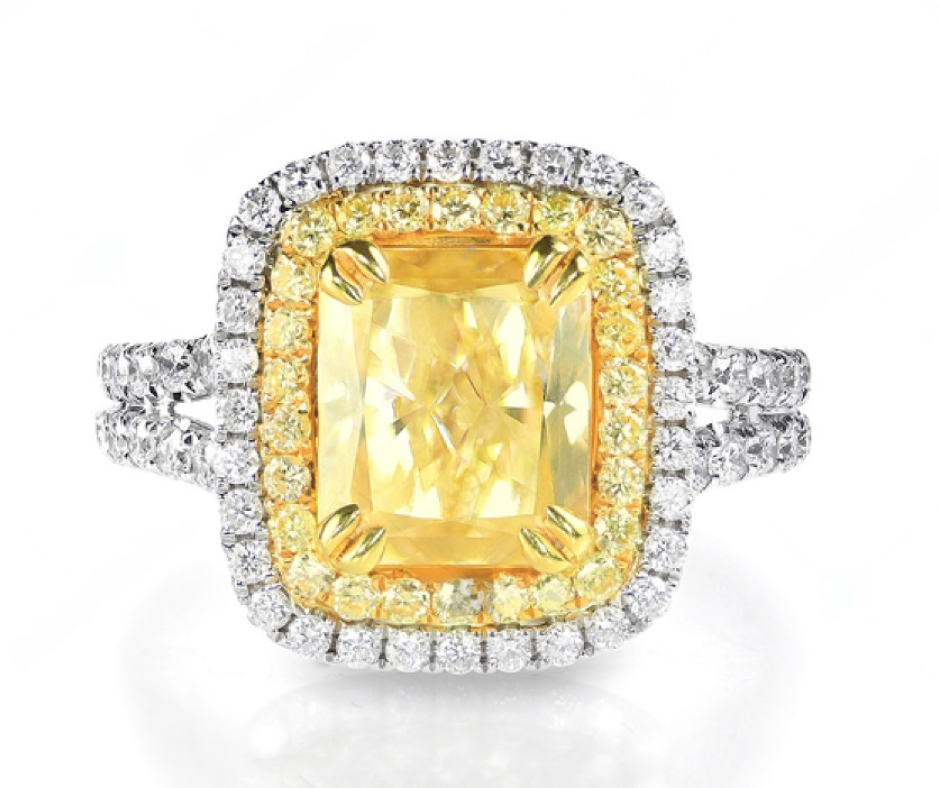
Canary diamonds are graded on a colour scale from faint yellow to fancy vivid yellow, with fancy vivid being the most valuable and rarest. T
The Gemological Institute of America (GIA) determines the colour grading of a canary diamond based on a comparison of the diamond's colour to a set of master stones with known colour grades.
In addition to their colour, canary diamonds can also exhibit other factors that affect their value and rarity, such as clarity, cut, and carat weight.
Canary diamonds can come in various shapes, including round, cushion, pear, and oval, and they are often used in jewellery such as engagement rings, necklaces, and earrings.
Due to their rarity and beauty, canary diamonds are highly sought after and can command high prices. In fact, some canary diamonds have sold for millions of dollars at auction.
What Are Yellow Diamonds?
Yellow diamonds, also known as fancy yellow diamonds, are another type of coloured diamond highly valued for their vivid yellow colour.
Unlike canary diamonds, yellow diamonds can exhibit a range of yellow shades, from light yellow to intense yellow, depending on the amount of nitrogen in the diamond's crystal lattice.
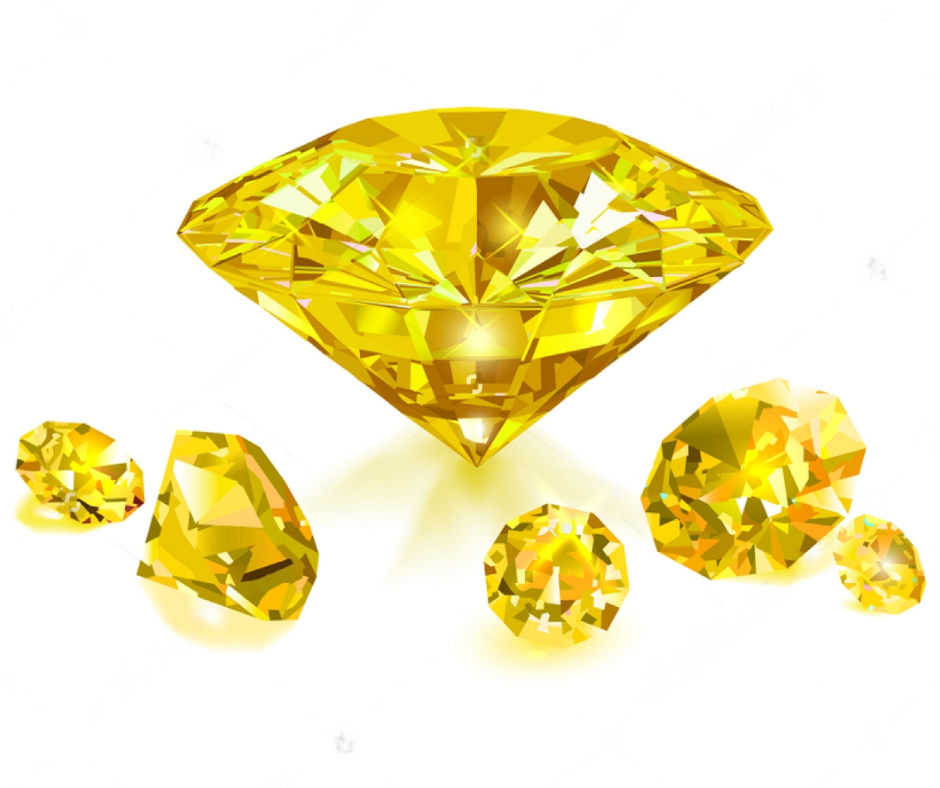
Yellow diamonds are graded using the same colour grading scale as canary diamonds, with the most valuable being those that are classified as fancy vivid yellow.
The GIA determines the grading based on a comparison of the diamond's colour to a set of master stones with known colour grades.
Yellow diamonds are formed under the same geological conditions as white diamonds, but the presence of nitrogen molecules causes the yellow colour.
However, yellow diamonds can also contain other trace elements that can influence their colour, such as boron and hydrogen.
Like canary diamonds, yellow diamonds can also exhibit other factors that affect their value and rarity, such as clarity, cut, and carat weight. They can be found in various shapes, including round, cushion, pear, and oval, and are often used in engagement rings, necklaces, and earrings.
One of the most famous yellow diamonds is the Tiffany Yellow Diamond, a 128.54-carat diamond considered one of the largest yellow diamonds in the world. It was discovered in South Africa in 1877 and acquired by Tiffany & Co. in 1878. It is displayed at the Tiffany flagship store in New York City today.
The showdown: Canary Diamonds Vs Yellow Diamonds
Canary and yellow diamonds are two types of fancy coloured diamonds that are often compared due to their similar yellow colour. However, the two's notable differences can affect their value, rarity, and overall appeal.
Color Intensity
One of the most significant differences between canary and yellow diamonds is their colour intensity. Canary diamonds are known for their intense and vivid yellow colour, while yellow diamonds can exhibit a range of yellow shades, from light yellow to intense yellow.
This can affect their value, as canary diamonds with a high colour saturation are often more valuable than yellow diamonds with a lighter hue.
Rarity
Another factor that can affect the value of canary and yellow diamonds is their rarity. While both types of diamonds are rare and valuable, canary diamonds are considered rare and can be harder to find than yellow diamonds.
This can also affect their market demand and popularity, as canary diamonds are often seen as more exclusive and luxurious.
Grading Process
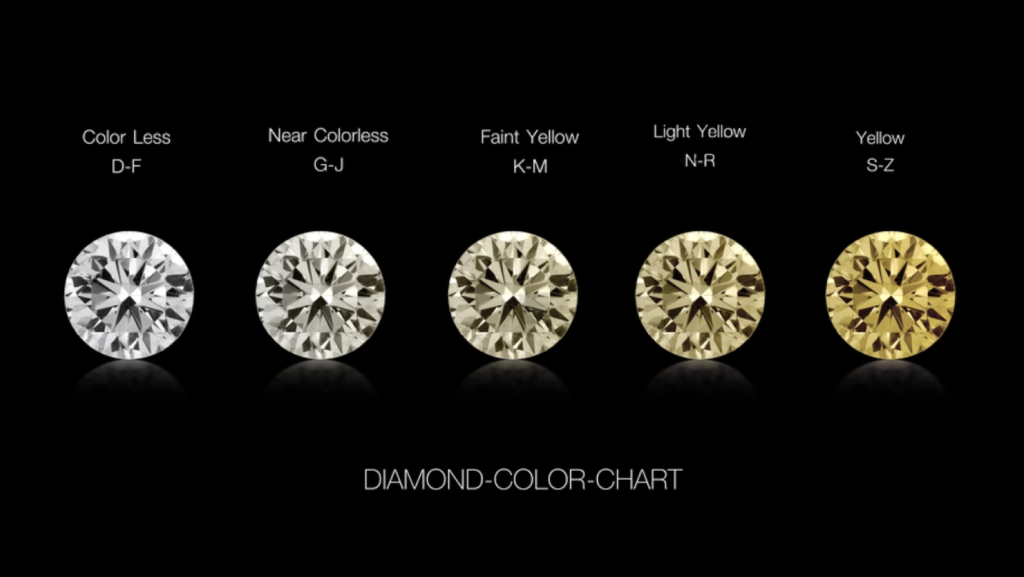
The grading process for canary and yellow diamonds is the same, with both being graded on the same colour grading scale by the GIA.
However, canary diamonds are typically given a different colour designation than yellow diamonds, with canary diamonds falling under the fancy yellow or fancy intense yellow category. While yellow diamonds fall under the fancy light yellow, fancy yellow, or fancy intense yellow categories.
When choosing between canary and yellow diamonds, personal preference and style are important factors to consider.
Canary diamonds are often favoured by those who prefer a more vibrant and bold yellow colour. Yellow diamonds are preferred by those who want a softer and more subtle yellow hue.
Conclusion
In the end, whether you choose a canary diamond or a yellow diamond, one thing is for certain: you'll have a stunning piece of jewellery that's sure to turn heads.
Both of these fancy colored diamonds are truly remarkable in their way, offering a range of yellow hues that can be rare, valuable, and undeniably beautiful.
Whether you're drawn to the intense and vivid yellow of a canary diamond or the softer and more subtle shades of a yellow diamond, each offers a unique and striking option. The yellow diamond of your choice is sure to make a lasting impression.
So, when choosing between canary diamonds vs yellow diamonds, trust your instincts and pick the one that speaks to you the most - you can't go wrong with either choice.
FAQs
Is the Canary diamond the same as a yellow diamond?
According to the official GIA grading, canary diamonds are classified as fancy yellow diamonds, graded between the fancy intense to fancy vivid range on the colour scale. Although "Canary Yellow" is a commonly used term to describe yellow diamonds with a pure yellow colour, it is not an official term.
Are canary yellow diamonds more expensive?
Yellow diamonds are commonly found with secondary colours, but the pure fancy yellow diamonds, often called "Canary Yellow Diamonds," are the most expensive and sought-after. In contrast, yellow diamonds are more common and, as a result, are typically less expensive per carat compared to other coloured diamonds.
Is a yellow diamond a canary?
Yes, a yellow diamond can be referred to as a canary diamond, but only if it is pure yellow and falls within the fancy yellow category on the GIA colour grading scale.
Are you considering purchasing a diamond but feeling overwhelmed by the various…
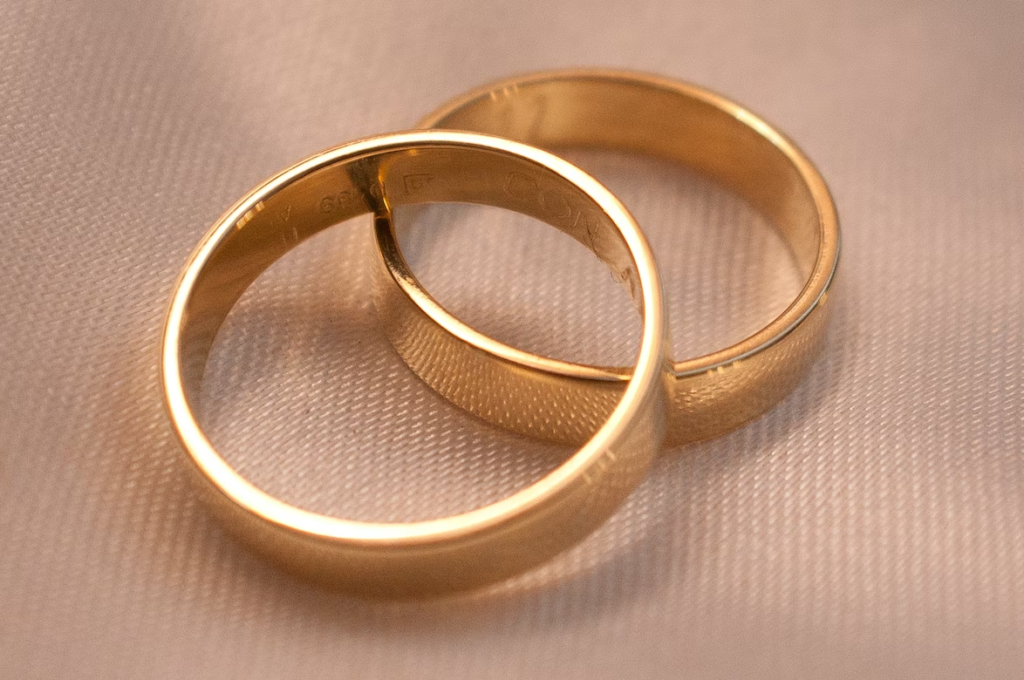
Simple does not mean ordinary, or worse yet: cheap. By definition, simple means straightforward or without excess elements. Simple can also mean "not elaborate or excessively complicated."
Simple wedding rings don't have to be boring. A lot of people these days opt for this because it can save a lot of money in the long run.
Wedding rings are traditionally simple, delicate, and elegant to match the ceremony's atmosphere. Often, wedding bands are one of the simplest pieces of jewellery that women wear.
However, as women became more fashion-conscious, wedding rings have also become a must-have accessory for fashion-loving women.
Just because rings come in simple designs doesn't mean they can't radiate luxury and beauty. This article will take a look at five types of simple rings that are still lavish and...
Classic Solitaire Diamond In White Gold

The solitaire ring design is a classic, timeless piece of jewellery that will never go out of style. The name comes from the fact that it is made up of one diamond, set in a single band.
This ring design has been around for centuries and is perfect for those who want something simple, yet elegant and sophisticated. It's also popular with celebrities and high-profile women who want to show off their status.
This type of ring has been popular for decades because it's so versatile and can be worn with almost any outfit or style. It looks great on its own or paired with other rings.
Plus, there are many different styles available - from traditional to contemporary - there's something for everyone!
Braided Platinum Wedding Ring
The braided platinum ring is perfect for the woman who wants a simple, yet luxurious look.
The braided design is one of the most popular styles of wedding rings today. It is classic, elegant and sophisticated.
The style is timeless and it can be worn with any outfit or occasion. You can wear it to work without looking too dressy or you can wear it when you go out on the town or even when you are just lounging around at home.
The style gives off a very elegant impression which makes it ideal for women who want to keep their look simple but still look luxurious.
The braided platinum ring has been around for quite some time now but it has become more popular recently because more people are getting into this kind of design when buying their own wedding rings.
Yellow Gold Rope Wedding Band
The gold rope ring design is a simple and elegant one. This design features a solid gold band with a thin rope of gold wrapped around its centre. The thin rope of gold can be around the entire ring or just in the centre.
The thin rope is meant to represent marriage vows and the bond between two people. It also symbolizes that you are taking your spouse as your partner in life and love.
What makes this style unique is that it can be worn by both men and women, which means that all couples can wear it on their wedding day.
This style is very popular with couples who are looking for something simple but elegant for their wedding day. The ring also comes in different metals like platinum, silver, white gold and yellow gold so you can choose the one that best suits your tastes and budget!
Plain Wedding Bands With Gold Infinity Symbol
The gold infinity ring design is one of the most popular choices in wedding rings for women. It's a simple and classic design that looks luxurious and stylish.
The gold infinity ring is also known as an eternity band. The word eternity means forever. Therefore, this type of engagement ring represents eternal love.
Infinity rings can be made from different kinds of precious metals such as white gold, yellow gold and platinum. Partners can also opt for alternative metals such as titanium for durability or silver for a more affordable price.
Two-Toned Metal Simple Wedding Bands

The two-toned metal ring design is a stylish and modern take on the classic wedding ring. It consists of two metals: one that’s usually lighter and shinier, like gold or silver, and another that’s either darker or matte in colour.
The contrasting metals make the ring unique and eye-catching. This style is also popular among people who want to wear simple wedding rings but who still want to look stylish.
The colours can be next to each other, or they can be separated by something else like diamonds or another gemstone.
Some people like their two-toned metal rings to have a lot of bling, while others prefer something that doesn’t stand out too much so they can wear them with everything they own!
Conclusion
At the end of the day, it really comes down to preference. The simple wedding ring that you choose should be something that you love and something that feels right on your finger.
The solitaire white gold ring is perfect for the traditionalist and is sure to get passed down as an heirloom. The braided platinum ring offers a modern, alternative take on the traditional band and can be made from many varieties of metal.
Whichever one you choose, it must be one that shows off what you want to express and it must fit to your liking.
FAQs
Are wedding rings supposed to be simple?
Wedding rings come in a variety of styles. Wedding rings can be as simple or intricate as you'd like. Engravings, inlays and channel set diamonds are popular details for wedding bands. Typically, there's a significant price difference between engagement rings and wedding bands.
What is the purpose of wedding rings?
Wedding bands are symbols of devotion. Since the middle ages, when the groom would give his bride a ring as proof of his dedication to the marriage and that he would never walk away from this bond, wedding rings have served as powerful symbols of love and commitment.
Why are wedding rings simpler than engagement rings?
Wedding rings are simpler than engagement rings, but they can be just as beautiful. Wedding rings are exchanged when the couple gets married as a symbol of their unity. Many people choose to wear both their wedding and engagement ring together, though some prefer to wear one or the other alone.
Simple does not mean ordinary, or worse yet: cheap. By definition, simple…
When purchasing a yellow diamond, grading is an important factor to consider. Grading helps determine a yellow diamond's quality, rarity, and value, making it an essential part of the diamond-buying process.
But how does grading yellow diamonds work?
In this blog, we'll take a look at the grading process, from the Four Cs (color, clarity, cut, and carat weight) to the different grading scales used for yellow diamonds.
The Four Cs Of Yellow Diamond Grading
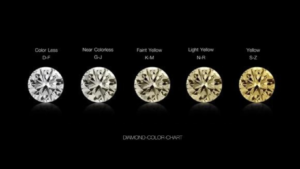
When grading yellow diamonds, four key factors are considered: color, clarity, cut, and carat weight. These factors, also known as the Four Cs, can greatly impact the beauty and value of a yellow diamond.
Color
The color of a yellow diamond is perhaps the most important factor in determining its value. Unlike other diamond colors, where a lack of color is desirable, the intensity of the yellow hue in a yellow diamond makes it unique and valuable.
Yellow diamonds are graded on a scale that ranges from faint yellow to fancy vivid yellow. The grading is based on the intensity and saturation of the yellow color, with fancy vivid yellow being the most rare and valuable.
Factors that affect the color grade of a yellow diamond include the presence of other colors, such as brown or green, the intensity of the yellow hue, and the overall saturation of color.
Clarity
The clarity of a yellow diamond refers to the presence of internal and external flaws, known as inclusions and blemishes. The fewer and less visible these flaws are, the higher the clarity grade of the diamond.
Yellow diamonds are graded on a scale that ranges from included to flawless. The clarity grade is determined by the size, location, and type of inclusions or blemishes present.
Factors that affect the clarity grade of a yellow diamond include:
- The size and location of inclusions.
- The type of inclusions.
- The presence of surface blemishes.
Cut
The cut of a yellow diamond refers to the proportions, symmetry, and polish. A well-cut yellow diamond will have optimal light reflection, resulting in a brilliant and lively appearance.
Yellow diamonds are graded on a scale that ranges from poor to excellent. The cut grade is determined by factors such as the depth and symmetry of the diamond, as well as the overall polish.
Factors that affect the cut grade of a yellow diamond include:
- The depth and symmetry of the diamond.
- The proportions of the diamond.
- The overall polish.
Carat weight
The carat weight of a yellow diamond refers to its size and weight and is often the most easily recognizable aspect of a diamond's value.
Yellow diamonds are graded on a scale that ranges from less than 1 carat to 5 carat or more. The actual weight of the diamond determines the carat weight grade.
Factors that affect the carat weight grade of a yellow diamond include the actual weight of the diamond, as well as the size and shape of the diamond.
The Process Of Grading Yellow Diamonds
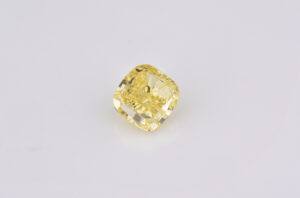
Now that we've discussed the Four Cs of yellow diamond grading, let's dive deeper into the grading process itself.
Diamond Grading Labs
Yellow diamonds are graded by independent third-party laboratories, such as the Gemological Institute of America (GIA) and the American Gem Society (AGS). These labs use state-of-the-art equipment and highly trained gemologists to analyze each diamond's unique characteristics.
Grading a yellow diamond can be lengthy, as each aspect of the diamond's appearance and physical properties must be evaluated and analyzed.
Grading Tools and Techniques
The tools and techniques for grading yellow diamonds are highly specialized and sophisticated. Microscopes, spectrometers, and other advanced equipment are used to closely examine the diamond's color, clarity, cut, and carat weight.
In addition to high-tech equipment, experienced gemologists use their trained eyes to assess the diamond's overall appearance and beauty. They look for any blemishes, inclusions, or other imperfections that could affect the diamond's value.
Grading Criteria and Standards
When it comes to grading yellow diamonds, some specific criteria and standards must be followed. Each lab has its own set of guidelines, but the overall grading system is generally consistent across the industry.
For example, the GIA uses a scale ranging from D (colorless) to Z (light yellow or brown). The AGS uses a scale that ranges from 0 (the best) to 10 (the worst) for cut, color, and clarity.
These grading criteria and standards ensure that each diamond is accurately assessed and valued. They provide a consistent framework for evaluating diamonds, regardless of origin or market.
The 6 Color Intensity Of Yellow Diamonds
Yellow diamonds are considered a type of colored diamond and are given the "Fancy" grade when they fall outside the D-to-Z range of colorless to light-yellow diamonds. A yellow diamond must display more color than the Z masterstone to receive a Fancy grade. The GIA Colored Diamond Grading System categorizes yellow diamonds into one of six color grades:
- Fancy Light
- Fancy
- Fancy Dark
- Fancy Deep
- Fancy Intense
- Fancy Vivid
The presence of nitrogen within a diamond is responsible for its yellow appearance. The amount of nitrogen present determines the degree of yellow color. In contrast, colorless diamonds typically have very little or no nitrogen, resulting in a lack of noticeable color.
Conclusion
In conclusion, understanding the intricacies of grading yellow diamonds is crucial for anyone purchasing or evaluating these exquisite gemstones. The Four Cs of yellow diamond grading - color, clarity, cut, and carat weight - play a significant role in determining a yellow diamond's value and beauty.
The grading process, carried out by reputable diamond grading labs using specialized tools and techniques, follows strict criteria and standards to ensure accuracy and consistency.
By understanding the grading process and the factors that affect a yellow diamond's value, you can make informed decisions when purchasing or evaluating these unique gemstones.
FAQs
What is the best clarity for yellow diamonds?
Yellow diamonds with a Fancy color grade are typically free from visible blemishes or inclusions. However, those with eye-visible flaws, graded as I1, can be found at a significant discount. Naturally, diamonds with higher clarity grades such as VVS, IF, or F will command a higher value than those with small inclusions graded as S.
Are yellow diamonds high quality?
Yellow diamonds of exceptional quality, with a diamond cut grade of VG/VG or higher and a clarity grade of VS1 or higher, are highly sought as investment pieces. This is especially true for diamonds above 2.00 carats and with a high intensity color grade of Fancy Intense or Fancy Vivid. In addition to the rising trend of exquisite diamonds and colored diamond jewelry, many economists now consider these exceptional yellow diamonds as recommended investment pieces.
How does grading yellow diamonds work?
The grading of yellow diamond colors is based on the depth and intensity of their hue. Diamonds with lighter colors are graded as Faint or Fancy Light and are less expensive. On the other hand, those with more intense hues are graded as Fancy Intense or Fancy Vivid, and they are much more valuable, commanding a higher price.
When purchasing a yellow diamond, grading is an important factor to consider….
When it comes to choosing the perfect yellow gemstone for an engagement ring or other jewellery, it can be a difficult decision to make. Both yellow sapphires and yellow diamonds are popular choices for those seeking a vibrant and stunning piece of jewellery, but which is the right choice for you?
Read on to discover everything you need to know about yellow sapphires vs yellow diamonds!
Understanding The Colors Of Sapphires And Diamonds
When choosing the perfect gemstone, colour is often one of the most important factors to consider. For those who prefer a sunny and vibrant hue, yellow sapphires and yellow diamonds are two popular options.
But, did you know that the intensity of the yellow colour can greatly impact the appearance and value of these gemstones?
Yellow Sapphires
Yellow sapphires can come in various shades, from light and subtle yellow to a deep and intense yellow-orange. The amount of iron and titanium present in the sapphire determines the intensity of the yellow colour. A higher concentration of these minerals will produce a more vivid and intense yellow hue.
Yellow Diamonds
Similar to yellow sapphires, the intensity of the yellow colour in diamonds is determined by trace elements, specifically nitrogen. A higher nitrogen concentration will result in a more vivid and intense yellow hue.
When grading yellow diamonds, the intensity of the yellow colour is evaluated on a scale ranging from faint yellow to fancy vivid yellow. The more intense the yellow colour, the more valuable the diamond is considered to be.
Yellow Sapphires Vs Yellow Diamonds
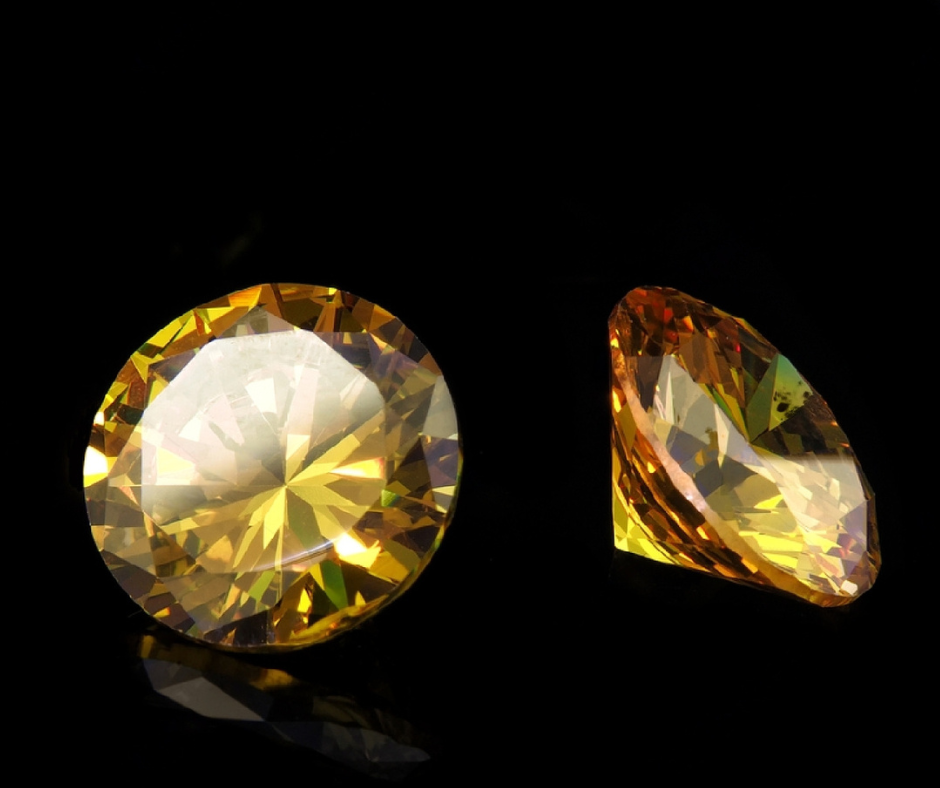
Yellow sapphires and yellow diamonds are both stunning gemstones that make for unique and eye-catching jewellery pieces. But, how do they compare with each other?
Let's take a closer look at these factors.
Durability
Both yellow sapphires and yellow diamonds are considered to be durable gemstones, with a high level of hardness that makes them resistant to scratches and everyday wear and tear.
However, yellow diamonds are slightly more durable than yellow sapphires due to their higher hardness level. Yellow diamonds are rated a 10 on the Mohs scale of mineral hardness, while yellow sapphires are rated a 9. This means that yellow diamonds are less likely to chip or scratch over time.
Rarity
Yellow diamonds are a rare and sought-after gemstone, with only a small percentage of diamonds naturally occurring in yellow colour. This rarity makes them more valuable and expensive compared to other diamond colours.
On the other hand, yellow sapphires are more readily available and are found in a range of yellow shades, making them a more affordable alternative to yellow diamonds.
Will They Fade?
Both yellow sapphires and yellow diamonds are resistant to fading over time. Unlike other gemstones, such as amethyst or aquamarine, yellow sapphires and yellow diamonds are not affected by exposure to sunlight or other environmental factors.
However, taking proper care of your jewellery is still important to prevent any damage or discolouration.
Cost
When it comes to cost, yellow sapphires are generally less expensive than yellow diamonds due to their higher availability. Yellow diamonds, especially those with a deeper and more intense yellow colour, can be quite expensive and are considered a luxury item. However, the cost of yellow sapphires and yellow diamonds can vary greatly depending on factors such as colour intensity, size, and overall quality.
Color Intensity
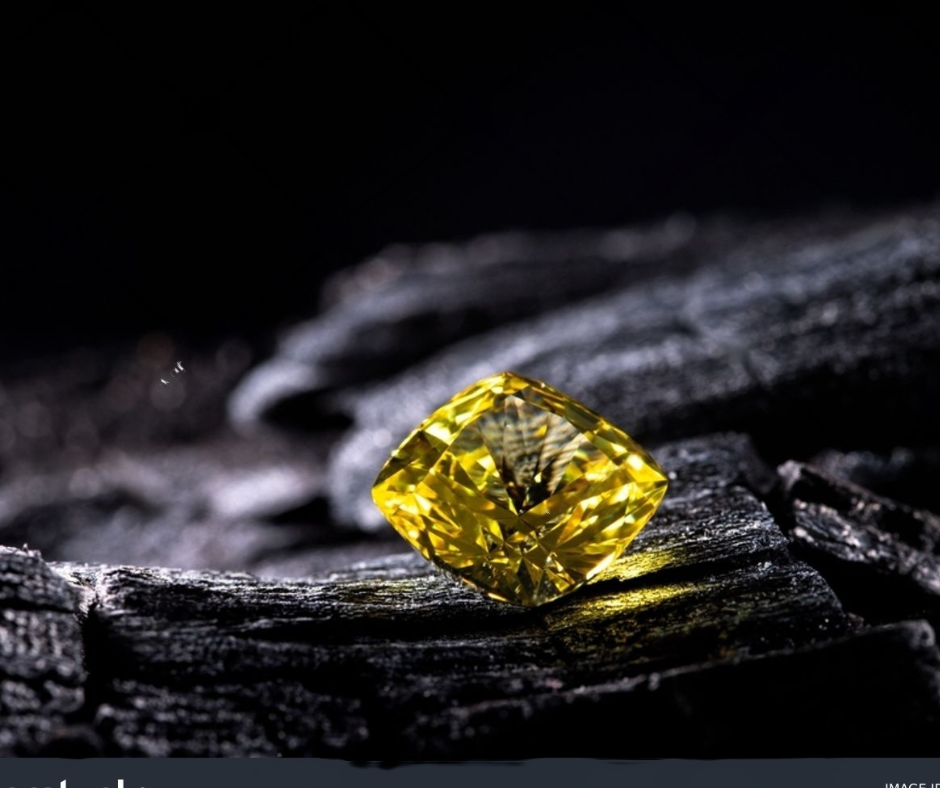
The intensity of the yellow colour is one of the most important factors to consider when distinguishing between yellow sapphires and yellow diamonds. Yellow diamonds typically have a more intense and vivid yellow colour compared to yellow sapphires, which tend to have a lighter and more subtle yellow hue. This is because diamonds contain more nitrogen, which contributes to the intensity of the yellow colour.
Clarity
Yellow diamonds tend to have a higher clarity compared to yellow sapphires. This is because diamonds are formed deep within the earth's mantle, where they are subjected to high pressure and temperature which results in fewer impurities. In contrast, yellow sapphires often contain more inclusions, which can affect their overall clarity.
Sparkle
Yellow diamonds are known for their exceptional sparkle and brilliance, which is due to their high refractive index. Yellow sapphires, while still beautiful, do not have the same level of sparkle and brilliance as yellow diamonds.
Final Thoughts
In conclusion, while yellow sapphires and yellow diamonds share a similar yellow hue, several important differences exist to consider.
Yellow diamonds offer a more intense and vivid yellow colour, exceptional sparkle, and exceptional durability, but they can also come with a higher price tag. Yellow sapphires, on the other hand, offer a more affordable alternative with a lighter and more subtle yellow hue, making them an attractive choice for budget-conscious people.
Ultimately, the choice between yellow sapphires and yellow diamonds depends on your personal preferences, budget, and what you value most in a gemstone.
FAQs
Which gemstone is more suitable for everyday wear - yellow sapphires or yellow diamonds?
Both yellow sapphires and yellow diamonds are durable and suitable for everyday wear, but yellow diamonds are slightly harder and more resistant to scratches.
Which is more expensive, yellow diamond or yellow sapphire?
Yellow sapphires are considerably more affordable than yellow diamonds, especially when comparing larger carat-weight stones. As the carat weight decreases, the price difference between the two gemstones becomes less significant.
How can I tell if my yellow sapphire or diamond is real?
To determine whether your yellow sapphire or diamond is real, there are a few methods you can use:
- Use a diamond tester: A diamond tester can identify whether a stone is a diamond or not. However, this method won't work for sapphires.
- Check for imperfections: Look at the stone under a loupe or microscope for any imperfections or inclusions. A real diamond or sapphire will have some natural imperfections, while a fake one will be almost perfect.
- Perform a water test: Fill a glass with water and drop the stone in it. A real diamond or sapphire will sink to the bottom, while a fake one will float or remain suspended in the water.
- Conduct a heat test: Hold the stone with a pair of tweezers and heat it with a lighter for about 30 seconds. The heat will not affect a real diamond, while a fake one will likely shatter or be damaged.
If you're still unsure, it's best to take your stone to a certified gemologist who can accurately determine whether it's a real diamond or a sapphire.
When it comes to choosing the perfect yellow gemstone for an engagement…
Diamonds come in various colours, and yellow-green diamonds are a unique and mesmerizing option growing in popularity. From the bright and sunny shade of canary yellow to the rich and earthy tones of olive green, yellow-green diamonds offer various hues to suit different tastes and styles.
This post will delve into yellow-green diamonds, exploring their characteristics, colours, and how to incorporate them into your jewellery collection.
Is Yellow-Green A Shade Of Yellow Diamonds?
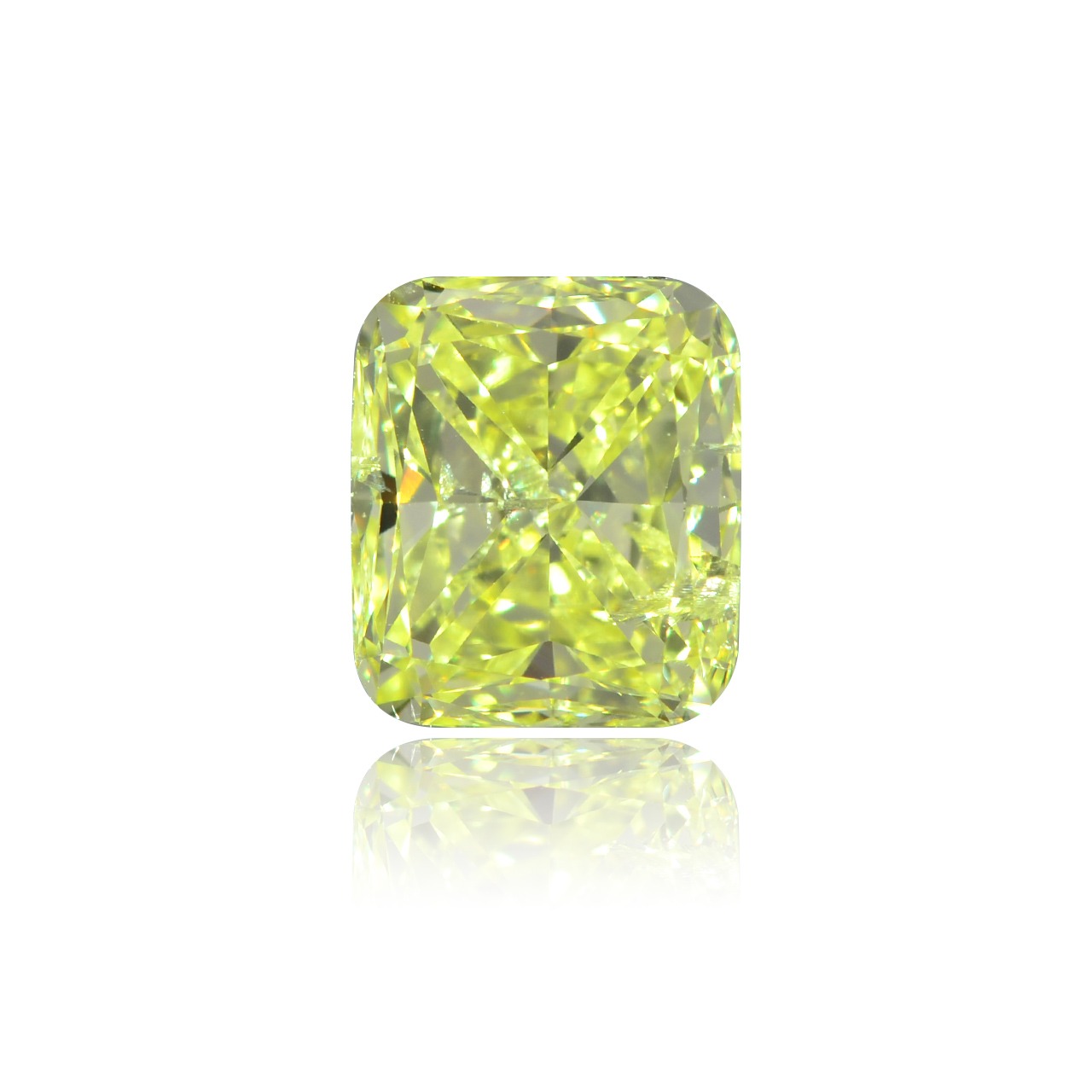
Yellow-green diamonds are unique coloured diamond that exhibits a mix of yellow and green hues. While yellow and green are separate colours on the visible spectrum, yellow-green diamonds have characteristics of both, making them a distinct and sought-after type of coloured diamond.
However, yellow-green diamonds are not simply a shade of yellow diamonds. While yellow diamonds are known for their warm, sunny colour, yellow-green diamonds have a distinctly different appearance. The combination of yellow and green hues creates a unique and captivating colour that sets them apart from other types of coloured diamonds.
Yellow-green diamonds can come in shades, from pale and delicate to deep and intense. Some yellow-green diamonds can lean more towards yellow or green, while others may have a more even mix of both colours. This colour variation gives yellow-green diamonds a wide range of possibilities for jewellery designs, as the colour can complement and contrast with other gemstones and metals.
In terms of value, yellow-green diamonds are considered rare and highly valuable due to their unique colour and scarcity. The value of a yellow-green diamond is determined by factors such as the intensity and saturation of the colour, as well as the carat weight and cut of the diamond. The more vivid and intense the yellow-green colour, the more valuable the diamond will likely be.
Understanding The Colors Of Yellow-green Diamonds
Yellow-green diamonds are a mesmerizing type of coloured diamond that can come in various shades and intensities. In this section, we'll take a closer look at the different colours of yellow-green diamonds and what makes them so special.
Canary Yellow
Canary yellow is a bright, sunny yellow shade often associated with warmth and happiness. A yellow-green diamond, this colour can add a cheerful pop of colour to any jewellery piece.
Canary yellow diamonds are often sought after for their bright and lively appearance, and when combined with a touch of green, they become even more unique and captivating.
Lime Green
Lime green is a zesty and fresh shade of green that can add a lively and youthful feel to any piece of jewellery. In a yellow-green diamond, lime green can add a touch of vibrancy and energy to the overall colour.
Lime green diamonds are often considered a more delicate and subtle option than other green diamonds, making them a popular choice for those who prefer a more understated look.
Olive Green
Olive green is a rich and earthy shade of green that can add depth and complexity to a yellow-green diamond. In an olive green diamond, the yellow and green hues blend seamlessly, creating a stunning and unique colour that can add a touch of sophistication to any jewellery piece.
Olive green diamonds are often considered a rare and more valuable option due to their deep and intense colour.
Other Shades And Combinations
Yellow-green diamonds can also come in various shades and colour combinations. Some diamonds may have a more even mix of yellow and green, while others may lean more heavily towards one colour.
Some yellow-green diamonds may also have secondary colours, such as brown or orange, that add even more depth and complexity to the overall colour.
Characteristics Of Yellow-Green Diamonds
Yellow-green diamonds get their colour from natural radiation and crystal lattice defects. The radiation causes the diamond's structure to absorb certain light wavelengths, creating yellow and green hues. The amount and type of radiation present during the diamond's formation can affect the intensity and saturation of the colour.
Clarity, Cut, And Carat Weight
Like other diamonds, yellow-green diamonds are graded based on their clarity, cut, and carat weight. Clarity refers to the diamond's level of blemishes and inclusions, while cut refers to the diamond's shape and how well it reflects light.
Carat weight refers to the diamond's size, with larger diamonds generally being more valuable than smaller ones.
Rarity and Value of Yellow-Green Diamonds
Yellow-green diamonds are rare and highly valuable due to their unique colour and scarcity. The combination of yellow and green hues is uncommon, making yellow-green diamonds highly sought after by collectors and jewellery enthusiasts.
The value of a yellow-green diamond is determined by factors such as the intensity and saturation of the colour, as well as the carat weight and cut of the diamond.
Comparisons To Other Colored Diamonds
Yellow-green diamonds are often compared to other coloured diamonds, such as yellow, green, and even blue diamonds. While yellow-green diamonds share some characteristics with these other diamonds, their unique colour combination sets them apart.
Yellow-green diamonds offer a more complex and intriguing colour profile than other diamonds, making them truly one-of-a-kind gemstones.
Conclusion
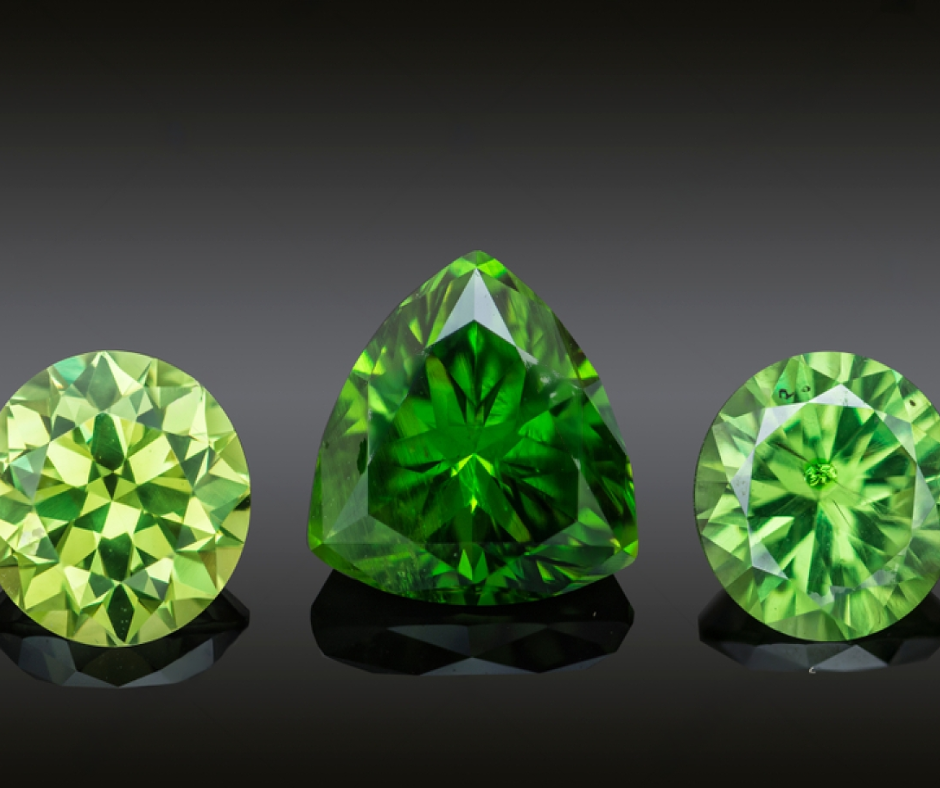
As you consider adding a yellow-green diamond to your collection or jewellery box, remember to appreciate the complex and captivating characteristics that make them so special. From their formation deep within the earth to the intricate interplay of radiation and crystal lattice defects, each yellow-green diamond is a unique masterpiece of nature.
So whether you're looking to make a bold statement with a canary yellow diamond or add a touch of subtle elegance with a lime green diamond, yellow-green diamonds will dazzle and delight.
So why not explore the world of yellow-green diamonds and discover the beauty and wonder of these extraordinary gemstones for yourself?
FAQs
Are yellow-green diamonds suitable for engagement rings?
Yes, yellow-green diamonds can make beautiful and unique engagement rings. Their rarity and beauty make them a highly sought after gemstone for engagement rings and other fine jewellery. However, choosing a high-quality diamond that is well-cut and has good clarity is important to ensure that it sparkles and shines as brightly as possible.
How should I care for my yellow-green diamond?
Yellow-green diamonds should be cared for like any other diamond. They are durable and hard, but can still be chipped or scratched if they come into contact with other hard materials.
To keep your diamond looking its best, it's important to clean it regularly with a gentle jewellery cleaner and to avoid exposing it to harsh chemicals or extreme temperatures.
How much are yellow-green diamonds?
The price of yellow-green diamonds can vary widely depending on a number of factors, including their size, quality, and colour intensity. Generally speaking, yellow-green diamonds are considered rare and valuable, so they tend to be more expensive than white diamonds of the same size and quality.
Yellow-green diamonds can range in price from a few thousand dollars per carat for lower-quality stones to several hundred thousand dollars for high-quality, intensely coloured diamonds. The exact price of a yellow-green diamond will depend on a number of factors and should be evaluated on a case-by-case basis.
Diamonds come in various colours, and yellow-green diamonds are a unique and…
Diamonds are undoubtedly one of the most sought-after gems in the world, and they come in a wide variety of colours, from classic white to rare and exotic hues like yellow. One common belief among diamond buyers is that yellow diamonds are more expensive than white diamonds due to their scarcity and unique beauty.
But is this really true?
We’ll answer that in this post, so keep reading!
The Factors That Affect Diamond Prices
Sparkling, dazzling, and oh-so-precious - diamonds are the ultimate gemstone that everyone desires. However, diamonds aren't all cut from the same cloth, and their prices can vary as much as their unique characteristics.
So, what makes one diamond more expensive than the other?
Carat Weight
Carat weight is the measurement of a diamond's size, one of the most important factors affecting its price. As a rule of thumb, the larger the diamond, the higher its price. However, the price per carat of a diamond increases exponentially as its size increases.
For example, a one-carat diamond can cost significantly less than a two-carat diamond of the same quality.
Cut
The cut of a diamond refers to its proportions and angles, and it significantly impacts its beauty and value. A well-cut diamond reflects light better, making it sparkle more, and it can appear larger than a poorly cut diamond of the same carat weight. A diamond's cut is graded from excellent to poor; the better the cut, the higher the price.
Clarity
Clarity refers to the presence or absence of blemishes or inclusions inside or on the surface of a diamond. These imperfections can affect the diamond's brilliance and overall appearance. The clarity of a diamond is graded on a scale from flawless to included, and the fewer imperfections, the higher the price.
However, it's important to note that some inclusions, such as those not visible to the naked eye, may not significantly affect the diamond's beauty or value.
Color
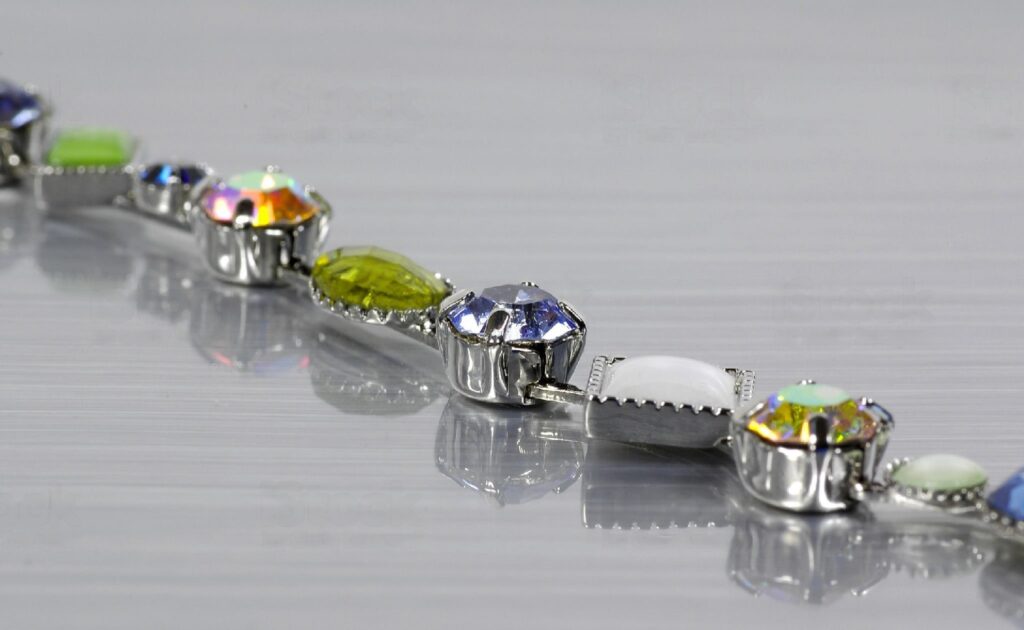
The color of a diamond can range from colorless to yellow or brown, and it's another factor that affects its price. Coloured diamonds are the rarest and most valuable, while colourless diamonds are less rare and therefore less valuable. The colour of a diamond is graded on a scale from D (colorless) to Z (light yellow or brown), and the closer it is to D, the higher the price.
Rarity
Finally, the rarity of a diamond can also affect its price. Some diamonds, such as pink, blue, or red diamonds, are extremely rare and valuable. The intensity of the colour can also affect the price, with more vivid and intense colours commanding higher prices.
Are Yellow Diamonds More Expensive Than White?
Now that we've explored the key factors that affect diamond prices, let's look at the price comparison between yellow and white diamonds. While yellow diamonds have been touted as more expensive than their white counterparts, the truth is that it's not always the case.
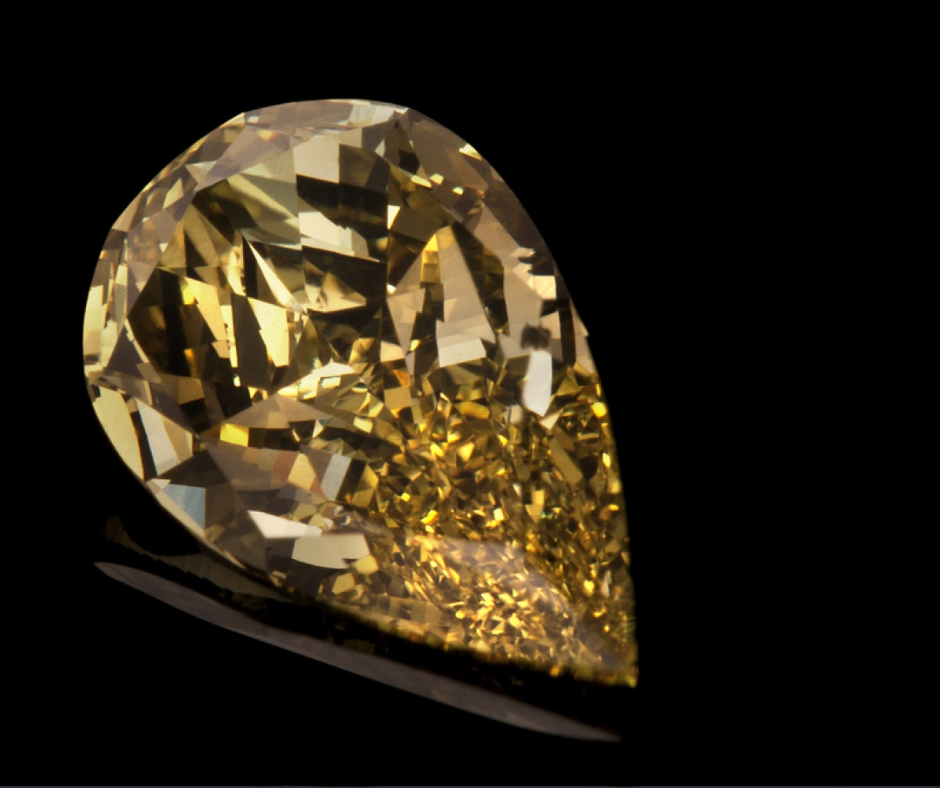
On average, yellow diamonds are more expensive than white diamonds. However, this doesn't mean all yellow diamonds cost more than white diamonds. Several factors, such as carat weight, cut, clarity, and color influence the price of a diamond.
For example, a 1-carat yellow diamond with a fancy cut and VS1 clarity can cost more than a 1-carat round white diamond with an excellent cut and VS2 clarity. In this case, the rarity of the yellow diamond and its unique cut can make it more valuable than a standard white diamond.
Similarly, a 1-carat white diamond with a D color, VS1 clarity, and excellent cut can cost significantly more than a 1-carat yellow diamond with an H color, VS2 clarity, and good cut. In this case, the white diamond's superior color, clarity, and cut make it more valuable.
Yellow diamonds are generally less expensive than white diamonds of similar quality. However, this doesn't mean that yellow diamonds are of lower quality. It's just that white diamonds are more popular and in higher demand than yellow diamonds.
To give you a better idea of the price differences between yellow and white diamonds, here are some examples of yellow and white diamonds with similar characteristics and their respective prices:
- A 1-carat round yellow diamond with a VS1 clarity and excellent cut can cost around $5,000. A 1-carat round white diamond with the same clarity and cut can cost around $7,000.
- A 2-carat cushion-cut yellow diamond with an SI1 clarity and good cut can cost around $12,000. A 2-carat cushion-cut white diamond with the same clarity and cut can cost around $18,000.
- A 3-carat princess-cut yellow diamond with a VS2 clarity and excellent cut can cost around $30,000. A 3-carat princess-cut white diamond with the same clarity and cut can cost around $45,000.
Conclusion
In conclusion, diamond prices are influenced by several factors, including carat weight, cut, clarity, color, and rarity. While yellow diamonds are often perceived as less valuable than their white counterparts, the truth is that it's not always the case. The rarity and uniqueness of a diamond can significantly impact its value, regardless of its color.
When purchasing a diamond, it's essential to consider all the factors that affect its value to ensure you're getting the best value for your money.
Don't be swayed by popular myths or assumptions about diamond prices. Instead, research, compare prices, and choose a diamond that fits your budget and personal preferences.
FAQs
Are yellow diamonds of lower quality than white diamonds?
No, yellow diamonds are not of lower quality than white diamonds. The color of a diamond does not affect its quality or durability. Yellow diamonds are simply a different color variation and can have the same characteristics and qualities as white diamonds.
What is the cheapest diamond color?
When it comes to natural fancy colored diamonds, brown diamonds are typically the most affordable. Unlike colourless diamonds, where factors such as clarity and cut can significantly impact their pricing, color is the most critical determinant of the price of fancy colored diamonds. Therefore, the color of a brown diamond is paramount in determining its value, while factors like clarity and cut have less impact.
What color of diamond is the most expensive?
Red diamonds are the most valuable coloured diamonds due to their rarity and deep, vivid crimson colour. On average, they can cost over $1 million per carat, making them the most expensive per carat among all colored diamonds. The largest red diamond ever sold was a 5.11-carat gem that fetched a staggering $8 million, translating to a per-carat cost of $1.6 million.
Diamonds are undoubtedly one of the most sought-after gems in the world,…
Diamond-cut gold is a unique and stunning material that has recently gained popularity in jewellery. It is a type of gold cut in a way that creates a sparkling effect, similar to that of a diamond. This technique gives the gold an incredible shine and an added dimension of texture, making it a sought-after material for high-end jewellery pieces.
But what exactly is diamond-cut gold? How is it made, and what sets it apart from other types of gold? This comprehensive overview will delve into the intricacies of diamond-cut gold, its history, and its uses in the jewellery world.
What Is Diamond Cut Gold?
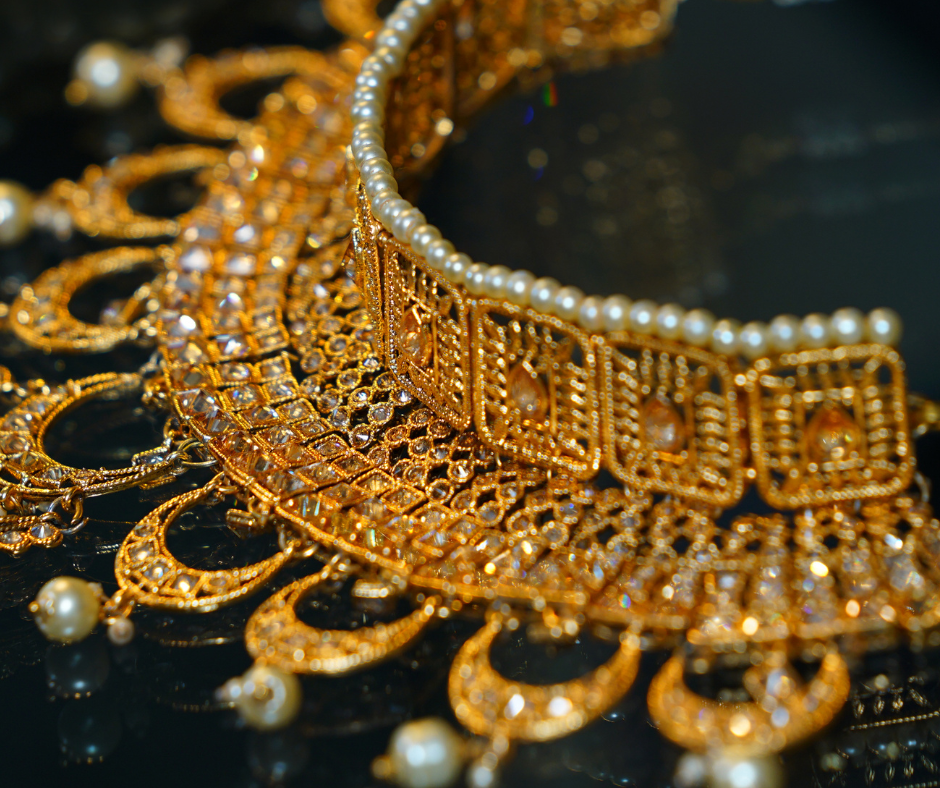
You may have heard about this sparkling material, but what is it, exactly? Let's dive into the definition of gold first.
Gold is a precious metal used for centuries to symbolize wealth and status. It is known for its unique properties, including its softness, malleability, and resistance to tarnishing. Gold is typically found in its natural state as nuggets or grains in rocks and riverbeds, and it must be refined to remove impurities before it can be used for jewellery-making.
Now, let's talk about the diamond-cutting technique. The diamond-cutting technique is used to create facets on the surface of a material to enhance its shine and reflectivity. This technique was originally used on diamonds but has since been applied to other materials, including gold.
So, how is diamond-cut gold made?
Diamond-cut gold is created using a precision cutting tool to create small, angled facets on the surface of the gold. These facets reflect light and create a sparkling effect similar to a diamond. The process requires a skilled artisan with a steady hand and a keen eye for detail.
Several types of diamond-cut gold exist, including single-cut, full-cut, and rose-cut. Single-cut diamond cut gold has fewer facets and is less sparkly, while full-cut diamond cut gold has more facets and a higher level of sparkle. Rose-cut diamond cut gold has a unique, domed shape that resembles the petals of a rose.
History Of Diamond Cut Gold
Now that we have explored what diamond-cut gold is and how it is made, let's delve into the history of this stunning material.
The origins of the diamond cutting technique can be traced back to the 15th century when diamonds first became popular in Europe. During this time, skilled craftsmen began using diamond-cutting techniques to enhance the beauty and sparkle of these precious stones. Over time, this technique was applied to other materials, including gold, to create diamond-cut gold.
Throughout history, diamond-cut gold has been used in various forms of jewellery, from delicate bracelets to ornate tiaras.
One of the most famous examples of diamond-cut gold in historical jewellery is the "Sun King Diamond", created in the 17th century for Louis XIV of France. This stunning piece of jewellery was adorned with over 100 diamonds and was one of the most expensive pieces ever created at the time.
In the 19th century, diamond-cut gold became even more popular as technological advances allowed for more intricate and precise cuts. During this time, rose-cut diamond cut gold, which has a unique and delicate texture, became popular.
Uses Of Diamond Cut Gold
Diamond-cut gold is a material that has captured the hearts of jewellery enthusiasts worldwide. Its unique texture and sparkle make it popular for various jewellery designs, from delicate engagement rings to bold statement pieces. Now that we have explored the fascinating history of diamond-cut gold, let's take a closer look at the many uses of this stunning material.
One of the most popular uses of diamond-cut gold is in engagement rings and wedding bands.
Diamond-cut gold's unique texture and sparkle make it a perfect material for these special occasions. Diamond-cut gold rings are available in various styles, from classic solitaires to intricate designs with multiple diamonds.
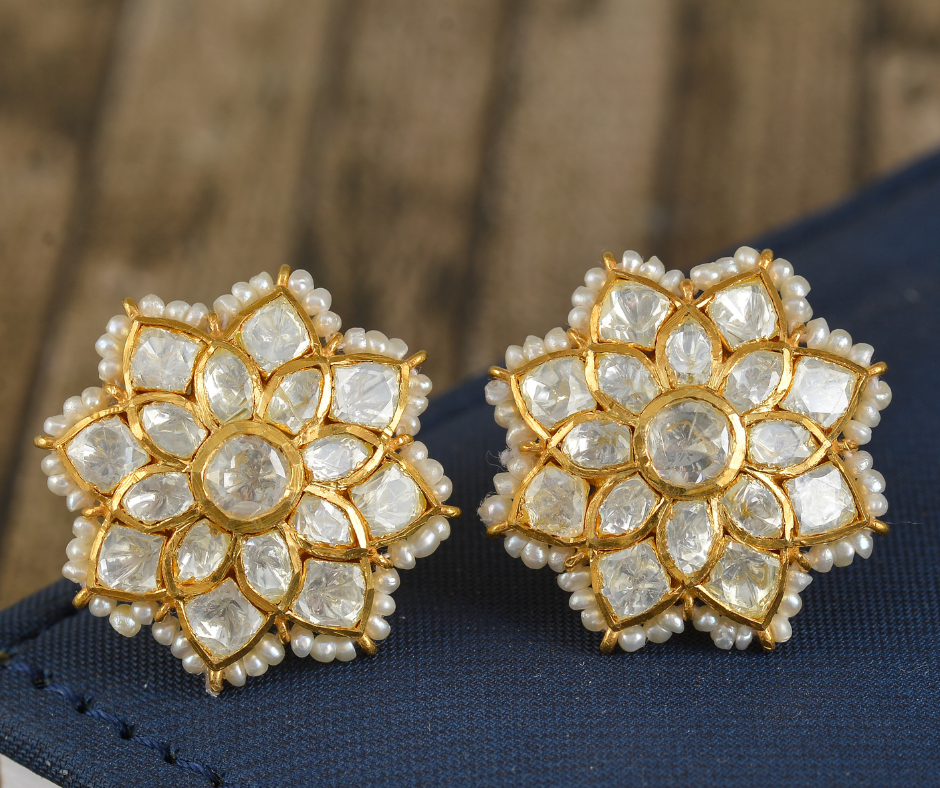
Diamond-cut gold is also popular for necklaces, bracelets, and earrings. The sparkle and shine of diamond-cut gold make it a perfect choice for pieces designed to catch the eye and add a touch of elegance to any outfit. Whether you prefer delicate, minimalist pieces or bold and statement-making designs, there is a diamond-cut gold piece for you.
In addition to traditional jewelry, diamond-cut gold is used in fashion and statement jewelry. This includes pieces like cocktail rings, brooches, and hair accessories. These pieces are often designed to be bold and eye-catching, and diamond-cut gold's unique texture and shine make it a perfect material for these types of pieces.
Conclusion
Diamond-cut gold is a material that has stood the test of time, capturing the hearts and imaginations of jewelry enthusiasts throughout history. From ancient civilisations to modern-day jewellery designers, the unique texture and sparkle of diamond-cut gold have been used to create stunning pieces of jewelry that continue to inspire awe and wonder.
Whether you prefer classic, traditional styles or bold and modern designs, diamond-cut gold offers endless possibilities for creating truly unforgettable jewellery pieces. Its unique texture and sparkle make it a perfect choice for engagement rings, wedding bands, necklaces, bracelets, earrings, and statement pieces.
And with its fascinating history and endless versatility, it's no wonder that diamond-cut gold continues to be a beloved material among jewelry enthusiasts worldwide.
FAQs
What is diamond-cut gold?
Diamond-cut gold is a type of gold cut or faceted with a diamond-tipped tool to create a unique texture and sparkle. The diamond-cutting process creates tiny, angled facets on the surface of the gold, which reflect light in a way that gives the material a distinctive and eye-catching appearance.
How is diamond-cut gold made?
Diamond-cut gold is made using a specialized tool called a diamond-cutting wheel. This wheel is coated with diamond particles, which are used to cut and shape the surface of the gold. The wheel is carefully guided over the surface of the gold, creating tiny, angled facets that give the material its unique texture and sparkle.
Is diamond-cut gold more expensive than regular gold?
Diamond-cut gold is typically more expensive than regular gold because of the additional labor and skill required to create the diamond-cut texture. The diamond-cutting process is a delicate and time-consuming procedure that requires a high level of expertise, which can add to the overall cost of the finished product.
Diamond-cut gold is a unique and stunning material that has recently gained…
Diamonds are renowned for their beauty and rarity, but size isn't the only factor to consider when selecting the perfect gem. While large diamonds may be eye-catching, smaller stones can be just as stunning with their unique charms and characteristics.
One such gem is the 1/10-carat diamond, a beautiful and delicate jewel that can make a big impact despite its small size.
But just how big is a 1/10 carat diamond, and what should you know about this petite but powerful stone?
In this blog post, we'll explore the dimensions of a 1/10-carat diamond, examine its characteristics and value, and discover why small can be truly beautiful when it comes to diamonds.
Know Your Way Around 1/10-Carat Diamond
Diamonds are a girl's best friend, but the size and weight of these precious stones can sometimes be confusing. One such size is the petite but powerful 1/10-carat diamond.
So, what is a 1/10-carat diamond, and how does it compare to other diamond sizes?
Carat Weight And Its Importance In Determining A Diamond's Value
First things first, let's talk about carat weight. A diamond's carat weight refers to its size and is one of the primary factors in determining its value. One carat equals 0.2 grams, and diamonds are typically weighed to the hundredth of a carat.
For example, a 1/10-carat diamond is equivalent to 0.10 carats, which is relatively small compared to other diamond sizes.
How 1/10 Carat Diamonds Are Classified And Measured
Now that we understand the importance of carat weight let's dive deeper into 1/10-carat diamonds. These diamonds are classified as small or "melee" diamonds, typically ranging from 0.001 to 0.20 carats. They are often used as accents in larger diamond jewelry, such as engagement rings, or in delicate pieces like earrings and pendants.
Comparing To Other Diamond Sizes And Weights
Although small, 1/10-carat diamonds can pack a punch for sparkle and brilliance. Compared to larger diamonds, they may not have the same size and weight, but they can have as much fire and scintillation. 1/10-carat diamonds are often less expensive than larger diamonds, making them an affordable option for those on a budget.
How Big Is A 1/10-Carat Diamond

Now that we better understand what a 1/10 carat diamond is, let's explore how big it is.
When it comes to diamond sizes, it can be challenging to visualize how big or small a diamond actually is. However, a 1/10 carat diamond is relatively small, measuring approximately 3 millimeters in diameter. To put this into perspective, a 1/10 carat diamond is about the size of a pinhead or the tip of a pencil.
But don't let its small size fool you.
1/10 carat diamonds are mighty in their own right, especially regarding their brilliance and sparkle. These diamonds can still catch the light and create beautiful reflections and flashes of color, making them an excellent choice for jewelry accents.
It's essential to note that the size of a 1/10 carat diamond can vary depending on its cut and shape. For example, a round brilliant cut 1/10 carat diamond may measure 2.8 millimeters in diameter, while a pear-shaped 1/10 carat diamond may measure 4.1 millimeters in length and 2.4 millimeters in width.
Understanding Its Characteristics
Now that we have a better understanding of the size of a 1/10 carat diamond, let's take a closer look at the characteristics that make these tiny diamonds unique.
Brilliance and Fire
One of the most notable characteristics of a 1/10 carat diamond is its brilliance and fire. Despite their small size, these diamonds can still produce a stunning sparkle and reflection of light. This is because diamonds have a high refractive index, which causes light to bend and reflect within the diamond, creating a beautiful display of color and light.
Color And Clarity
Like all diamonds, 1/10 carat diamonds are graded for color and clarity. The color of a diamond can range from colorless to yellow or brown, with colorless diamonds being the most valuable.
Similarly, clarity measures how many blemishes or inclusions are present within the diamond. A higher clarity grade generally indicates a more valuable diamond.
Cut And Shape
The cut and shape of a 1/10 carat diamond can also impact its overall appearance and value. The most popular cut for 1/10 carat diamonds is the round brilliant cut, which maximizes the diamond's brilliance and fire. However, other cuts such as princess, pear, and marquise can also add unique characteristics and beauty to a diamond.
Uses For 1/10 Carat Diamonds
Due to their small size, 1/10 carat diamonds are often used as accent stones in larger diamond jewelry, such as engagement rings and pendants. They can also be set in delicate jewelry pieces such as earrings, where their petite size adds a subtle but stunning touch of sparkle.
Going Down To Its Value
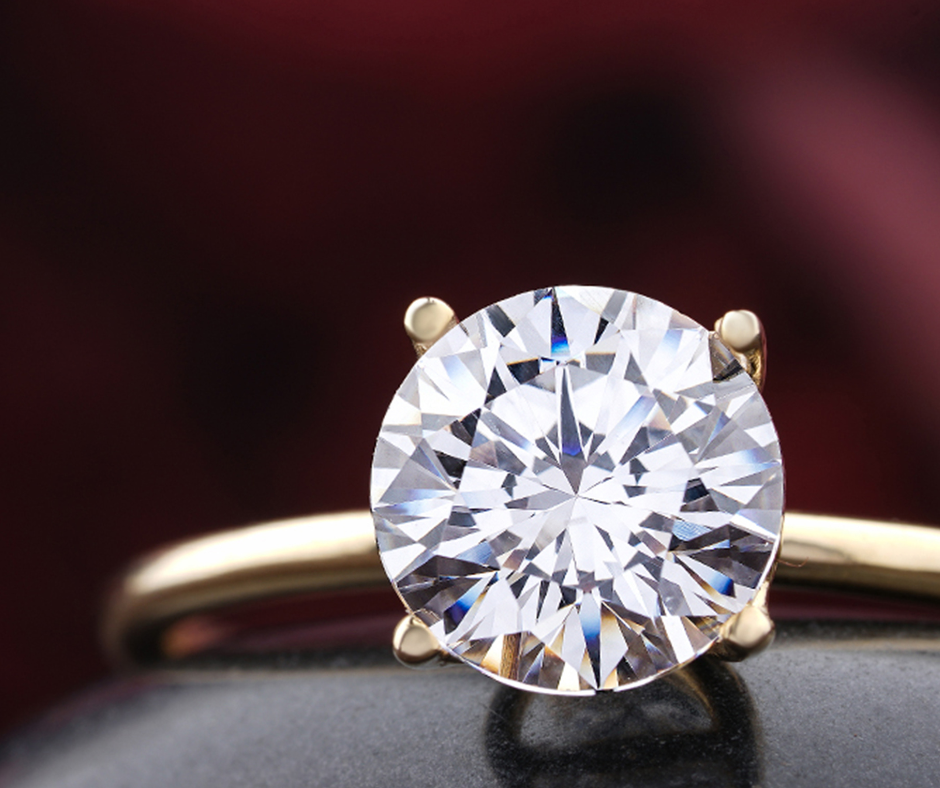
You may have heard the saying that "good things come in small packages," and that couldn't be more true for 1/10-carat diamonds. While they may be tiny, these little gems can pack a significant punch in value. So, let's take a closer look at how these small diamonds are valued and what factors come into play when determining their worth.
Just because they're small doesn't mean they should be overlooked!
Carat Weight
As the name suggests, carat weight refers to the weight of the diamond and is one of the primary factors in determining its value. While a 1/10-carat diamond may not seem like much, it can still have significant value depending on its other characteristics.
Color and Clarity
Color and clarity are also important factors in determining a diamond's value. Diamonds with a higher color grade, such as D or E, are considered more valuable than those with lower color grades. Similarly, diamonds with a higher clarity grade, indicating fewer inclusions and blemishes, are also more valuable.
Cut
The cut of a diamond can also impact its value, as a well-cut diamond can enhance its brilliance and overall beauty. Diamonds with an excellent or very good cut grade are generally more valuable than those with a lower cut grade.
Conclusion
In conclusion, the size of a 1/10 carat diamond may seem small, but its beauty and value can shine just as brightly as any larger diamond. Whether you want to add a delicate touch to your jewelry collection or search for the perfect accent stone, a 1/10 carat diamond is a beautiful and valuable option.
So, the next time you come across one of these little gems, don't underestimate its worth – remember that the best things come in small packages!
FAQs
How big is a 1/10-carat diamond compared to a 1-carat diamond?
A 1/10 carat diamond is significantly smaller than a 1 carat diamond. In fact, it would take ten 1/10 carat diamonds to equal the weight of a 1 carat diamond.
How much does a 1/10-carat diamond typically cost?
The cost of a 1/10 carat diamond can vary depending on its cut, colour, and clarity, but generally, they are less expensive than larger diamonds.
Are 1/10-carat diamonds valuable compared to larger diamonds?
While 1/10 carat diamonds may not be as valuable as larger diamonds, they can still hold significant value due to their beauty and rarity.
Diamonds are renowned for their beauty and rarity, but size isn’t the…
Gold is one of the most popular materials used in jewelry making and for a good reason. Its beauty, durability, and value make it an excellent choice for both investment pieces and everyday wear.
Have you ever heard of white or rose gold? What about 24K or 17K? Do you ever wonder what they are and how they affect the value of a piece of jewelry?
While gold is a timeless and beloved metal for jewelry, its types and colors can be confusing and overwhelming. Understanding the differences between gold types and colors is essential for making an informed decision when investing in fine jewelry.
So, let's take a closer look and unravel the mysteries of gold in the jewelry world.
A Comprehensive Look At The Composition Of Gold
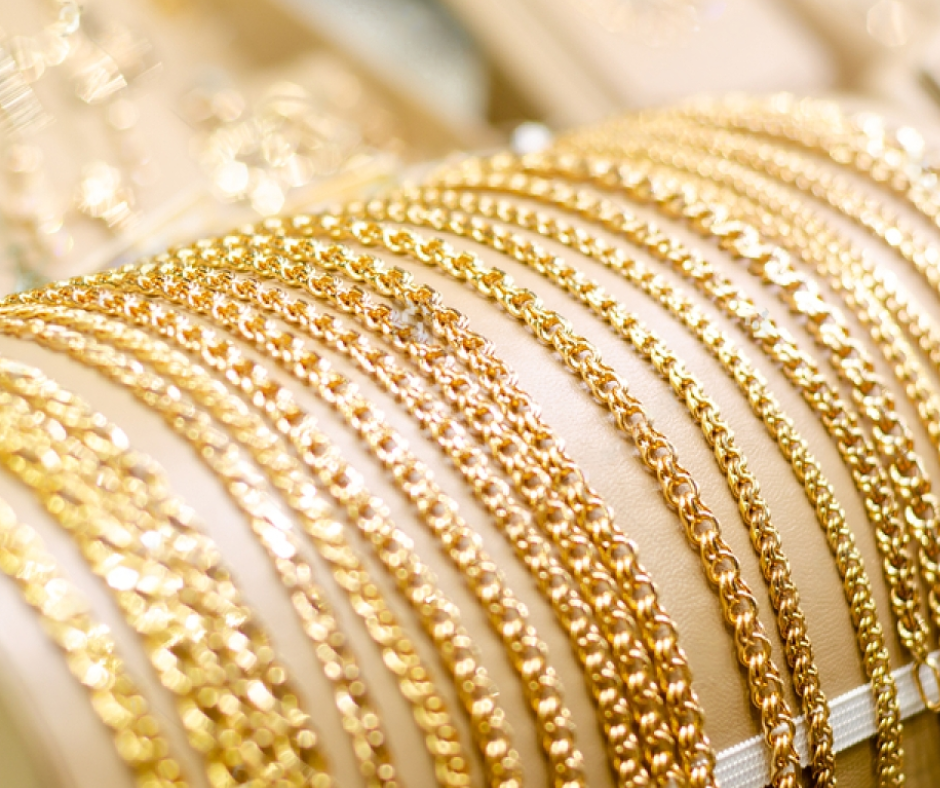
At its core, gold is an element found in the periodic table with the symbol Au. It is a soft, dense, and malleable metal with a distinctive yellow color. However, gold's unique chemical and physical properties make it special.
Gold is a transition metal considered one of the least reactive chemical elements, making it resistant to corrosion, tarnishing, and rust. This is why gold jewelry can retain its shine and beauty for centuries. In addition, gold has a relatively low melting point, which makes it easy to work with and mould into different shapes and forms.
Regarding its atomic structure, gold has 79 protons and electrons, with 118 neutrons in its most common isotope. It is a dense metal with a specific gravity of 19.3, making it more than 19 times heavier than an equal volume of water.
The Ins And Outs Of Gold Karats
When it comes to an understanding the value and quality of gold jewelry, karats are an essential factor to consider. A karat is a measure of the purity of gold, with higher karat gold being purer and, therefore, more valuable.
The Difference Between Karat and Carat
Before we dive into karats, let's clarify the difference between karat and carat. While the two terms sound similar, they have entirely different meanings. Karat refers to the measure of gold purity, while carat refers to the weight of diamonds and other gemstones.
Now, back to karats. Pure gold is 24 karats (24K), meaning it is 99.9% pure gold. However, pure gold is too soft for everyday wear, so it is typically alloyed with other metals like silver, copper, or nickel to increase its strength and durability. The amount of pure gold in a piece of jewelry is expressed as a percentage of 24, with 18K gold being 75% pure, 14K gold being 58.5% pure, and so on.
Understanding The Colors Of Gold Karats
In addition to affecting the purity of gold, karats also affect the colour of gold. Yellow gold is the most traditional and classic option, typically available in 18K, 14K, and 10K.
White gold is created by alloying yellow gold with other metals like nickel or palladium, and it is available in the same karat options as yellow gold. Rose gold, which has a pinkish hue, is created by alloying yellow gold with copper.
Gold Comes More Than Yellow
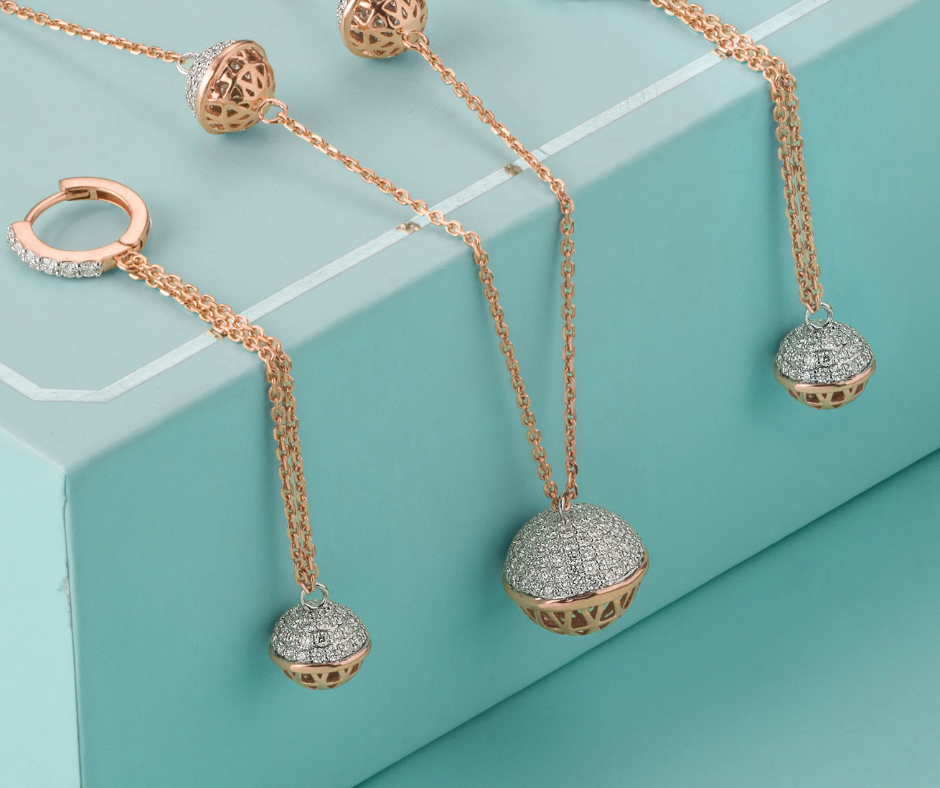
While yellow gold is the most traditional and classic colour for gold jewellery, it's important to know that gold can also come in a range of other colours. These colours are achieved through alloying; other metals are mixed with gold to create a new colour.
So what are the different types of Gold?
White Gold
One of the most popular alternatives to yellow gold, white gold is created by alloying yellow gold with metals like nickel, palladium, or silver. This creates a silvery-white colour that resembles platinum or white gold. White gold is often plated with rhodium to enhance its shine and durability.
Rose Gold
With a pinkish hue, rose gold is created by alloying yellow gold with copper. The amount of copper used can vary, resulting in different shades of rose gold. It's a popular choice for vintage or antique-inspired jewellery.
Green Gold
Green gold is created by alloying yellow gold with silver, copper, and zinc. The addition of silver gives it a greenish tint. Green gold is a unique and uncommon option for jewellery, making it a great choice for those looking for something different.
Understanding Gold Alloys
Gold alloys are a magical combination of pure gold with other metals, like silver, copper, zinc, and nickel. This blend of metals changes the color of gold and influences its durability and value.
Knowing the different types of gold alloys can help you decide when buying your next piece of gold jewelry. So, let's dive into the world of gold alloys and discover the secrets behind their shimmering beauty!
14K Gold
This is the most common gold alloy used in jewellery, with 58.65% pure gold and 41.3% other metals. 14K gold is known for its durability and affordability, making it a popular choice for everyday wear.
18K Gold
With 75% pure gold and 25% other metals, 18K gold is a higher quality alloy than 14K. It has a richer color and is more valuable but also more malleable and less durable.
22K Gold
This alloy has 91.7% pure gold and 8.3% other metals, making it a soft and malleable option for jewellery. It's not commonly used in jewellery because of its softness, but it's often used in decorative items like coins and sculptures.
Wrapping Up
In conclusion, gold comes in a rainbow of colours, each with its unique charm and allure. From the timeless elegance of yellow gold to the romantic blush of rose gold and the modern chic of white gold, the gold color suits every taste and occasion.
The next time you're shopping for gold jewelry, take the time to consider which color speaks to your heart and makes your spirit shine. Whether you're treating yourself or a loved one, a piece of gold jewelry is a timeless and precious treasure that will bring joy for years to come.
So go ahead and embrace the beauty of gold in all its dazzling colours!
FAQs
Can gold be mixed with other metals to create different colors?
Yes, gold can be mixed with other metals to create different colours. For example, adding copper to gold creates a reddish hue known as rose gold, while adding nickel or palladium to gold creates white gold.
Does the color of gold affect its value?
The colour of gold can affect its value, as different colours of gold have different levels of rarity and desirability. Generally, yellow gold is the most common and thus the least expensive, while rose and white gold can be more valuable due to their unique properties.
Does the color of gold fade or change over time?
The color of gold does not fade or change over time. However, the finish of the gold jewelry can wear off over time with everyday wear and tear. This can be remedied with a visit to a jeweler to have the piece re-polished or re-plated, if necessary.
Gold is one of the most popular materials used in jewelry making…
Stacked bangles have been a fashion staple for decades and remain popular among women. Stacking bangles is about layering bracelets of different colours, textures, and sizes to create a unique and eye-catching look.
But with so many options and combinations, it can be overwhelming to know where to start.
That's why we've created the ultimate guide to stacking bangles for every occasion, with tips and tricks to help you create the perfect look for any outfit and event.
So, grab your favourite bangles, and let's get started!
Different Types Of Bangles
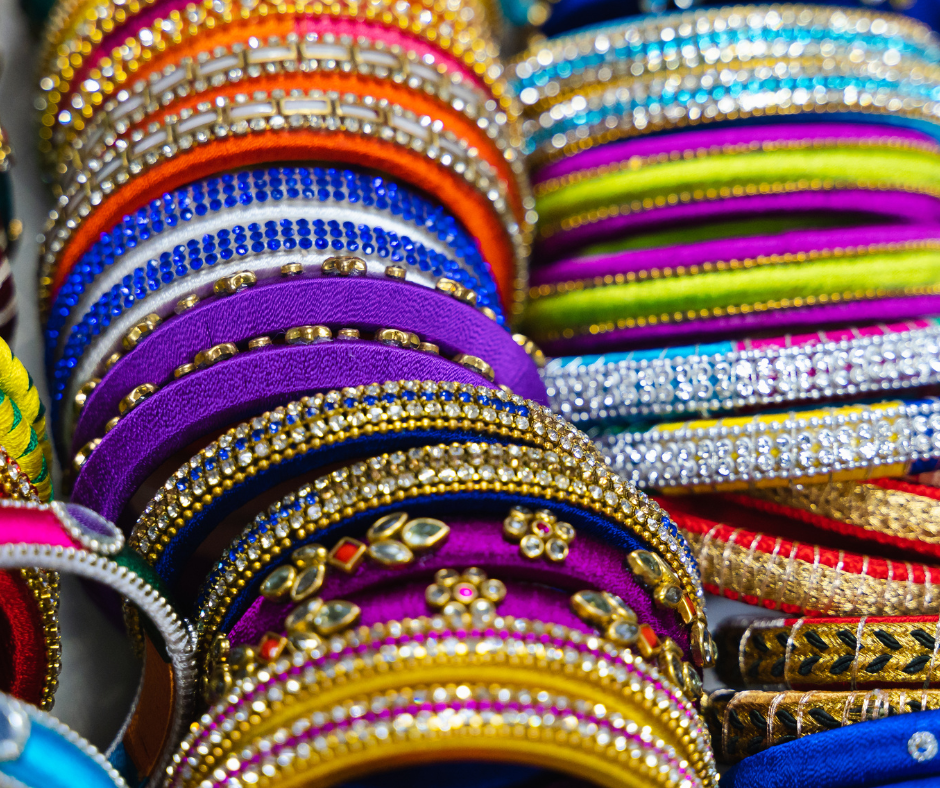
Bangles are among the oldest and most popular jewellery women wear worldwide. They are usually circular or semi-circular bracelets made of various materials such as metal, plastic, wood, glass, and even bone.
Here, we will explore the different bangles you can incorporate into your jewellery collection.
Thin Bangles
Thin bangles are delicate and elegant, perfect for layering with other bracelets and bangles. They come in different materials, such as metal, plastic, and glass. Thin bangles can be worn independently or stacked to create a layered look.
Thick Bangles
Thick bangles are bold and statement-making, perfect for adding colour or texture to any outfit. They come in various materials, such as metal, wood, and resin. Thick bangles are typically worn alone but can also be mixed and matched with thin bangles to create a unique look.
Cuff Bangles
Cuff bangles are wide and open-ended, easily slipping on and off the wrist. They come in different designs, from simple and minimalistic to elaborate and embellished. Cuff bangles are perfect for those who want a statement piece without the hassle of clasps or closures.
Beaded Bangles
Beaded bangles are made of beads strung together to create a colourful and textured accessory. They come in different materials like glass, wood, and plastic. Beaded bangles can be worn alone or stacked with other bangles and bracelets for a fun and playful look.
Charm Bangles
Charm bangles are a type of bangle with one or more charms attached. The charms can be anything from letters and symbols to animals and flowers. Charm bangles are perfect for those who want to add a personal touch to their jewellery.
Mixing And Matching Bangles
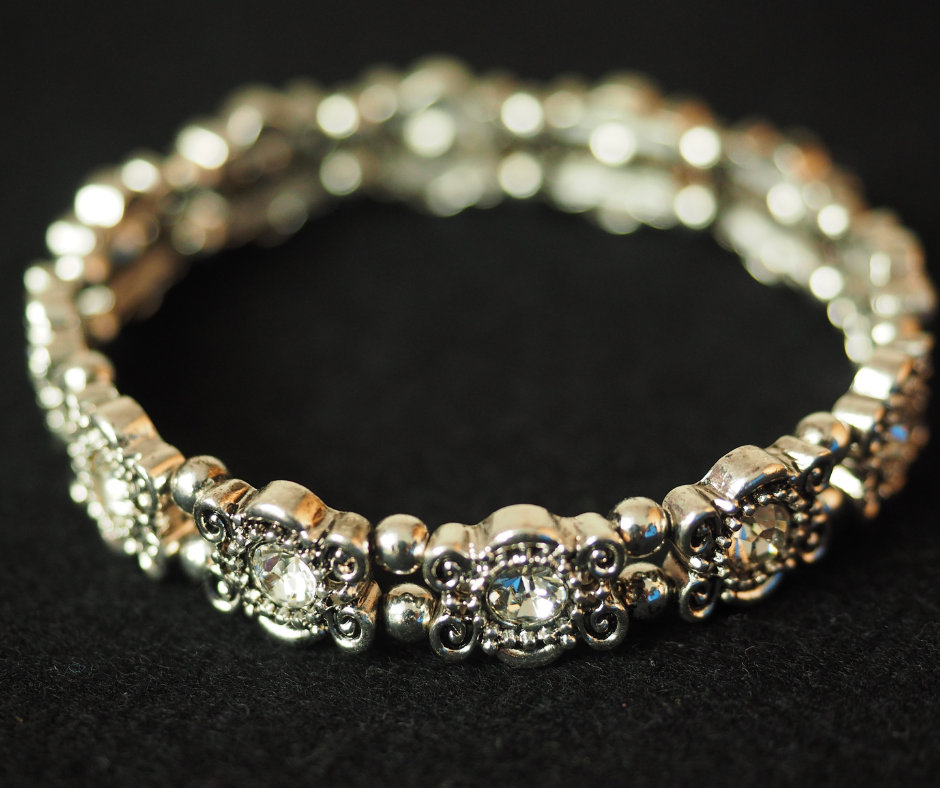
When it comes to stacking bangles, mixing and matching different types of bangles is key to creating a unique and personalised look. Here are some tips for mixing and matching bangles based on their colours, metals, textures, and shapes:
Colours
One way to mix and match bangles is by using a colour scheme. This means you choose bangles with similar or complementary colours that go well together. For example, you can choose bangles in shades of blue, green, and purple for a cool-toned colour scheme.
And if you're trying to aim for a bold and vibrant look, mix and match bangles in warm tones like red, orange, and yellow.
Metals
Mixing and matching different metal bangles are another way to add variety to your stack. You can choose bangles in the same metal colour, such as all gold or all silver, for a cohesive look. Alternatively, you can mix metals by pairing gold and silver bangles together. Mix metals with wood or beads to create a unique and eclectic look.
Textures
The texture is another element that can add dimension to your bangle stack. Mix and match textures like smooth, beaded, or braided bangles to create a visually interesting look. Textured bangles can add depth to your stack and draw the eye to certain parts of your wrist.
Shapes
Mixing and matching different-shaped bangles can also add variety to your stack. You can choose bangles with different shapes, such as round, oval, square, or triangular, to create a playful and dynamic look. You can also mix and match different sizes of bangles to create a layered and textured look.
How To Wear Stacked Bangles: The Right Way
Now that we have covered the different types of bangles and how to mix and match them, let's talk about how to wear them.
Here are some tips on how to wear bangles correctly:
Which arm to wear bangles on?
Traditionally, bangles are worn on the right hand in many cultures. However, you can wear them on your wrist or wrists for a more dramatic look. Ultimately, personal preference and what feels comfortable for you is up to you.
How many bangles to wear?
The number of bangles you wear is up to you and depends on the occasion and the look you're going for. You can wear just one bangle for a simple and elegant look or stack multiple bangles for a bohemian vibe. A good rule of thumb is to wear odd numbers of bangles, such as three, five, or seven, for a balanced and visually interesting look.
How to mix and match with other jewellery?
When it comes to mixing and matching bangles with other jewellery, it's all about balance. If you're wearing statement bangles, such as chunky metal cuffs, keeping other jewellery minimal is best to avoid overwhelming the look. However, if you're wearing dainty bangles, you can layer them with delicate necklaces or earrings to create a cohesive look.
Conclusion
In conclusion, bangles are a timeless and versatile accessory that can add colour and personality to any outfit.
Whether you prefer delicate and dainty bangles or bold and chunky cuffs, there are countless options. Mixing and matching different types of bangles based on their colours, metals, textures, and shapes allows you to create a unique and personalised look that reflects your style.
Remember to experiment with wearing bangles on different wrists and pairing them with other jewellery to find what works best. With these tips, you can confidently wear bangles for any occasion and elevate your style to the next level!
FAQs
How do I choose the right size bangles for stacking?
When choosing bangles for stacking, it's important to consider the diameter of each bangle.
To ensure a comfortable fit, measure the widest part of your hand and choose bangles with a diameter slightly larger than that measurement. It's also important to consider the thickness of each bangle, as thicker bangles will take up more space on your wrist.
Can I mix and match different metal bangles?
Yes, you can. However, it's important to ensure that the metals complement each other. For example, you can mix silver and gold bangles or metals with similar finishes, such as matte or shiny.
What occasions are appropriate for wearing stacked bangles?
Stacked bangles can be worn for various occasions, from casual outings to formal events. For a casual look, you can mix and match bangles in different colours and textures to add a pop of personality to your outfit.
You can opt for more sophisticated and elegant bangles for a more formal occasion, such as gold or silver cuffs. Stacked bangles can also be worn as a statement piece for a night out or concert, adding an edgy and bohemian vibe to your look.
Stacked bangles have been a fashion staple for decades and remain popular…
The engagement ring has been the traditional symbol of a couple's commitment for generations. However, in recent years, a new trend has emerged that challenges this convention: the pre-engagement ring.
More and more couples opt for these rings to signify their commitment to each other before getting engaged without the pressure of a formal proposal. This trend has been embraced by couples of all ages and backgrounds, sparking a debate on whether the pre-engagement ring is here to stay or just a fad.
In this article, we'll explore the rise of pre-engagement rings, their significance, and what you need to know before considering one for yourself or your partner.
The Evolution Of Engagement Rings
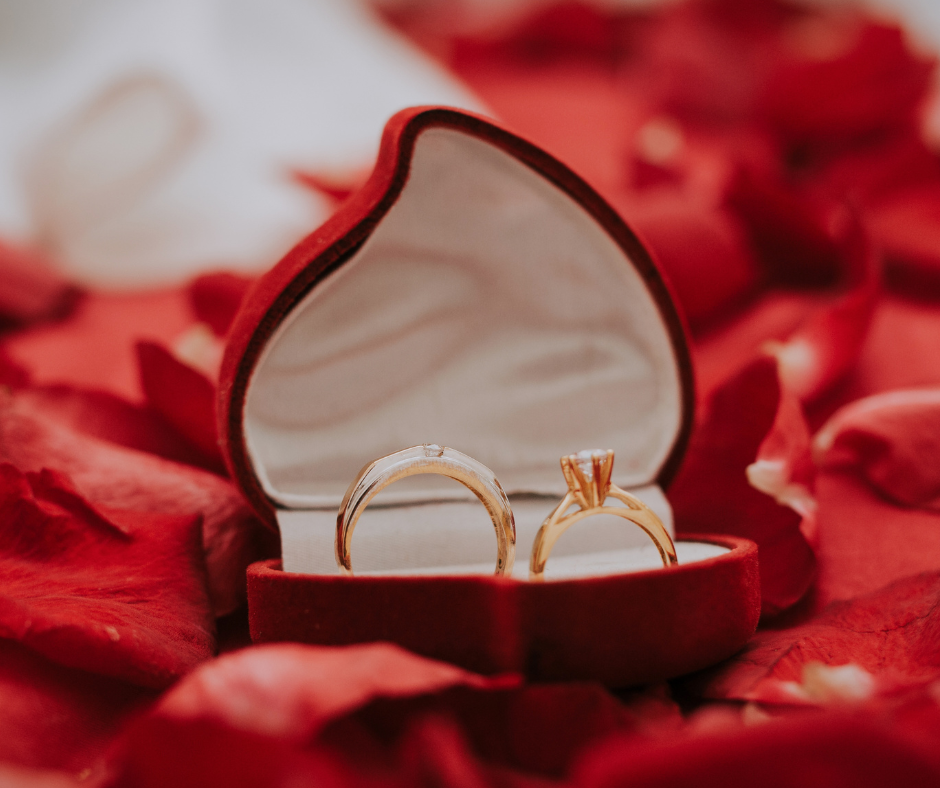
For centuries, engagement rings have symbolised a couple's commitment. But where did the tradition begin, and how has it evolved? Let's look at the history and evolution of engagement rings.
Historical Significance
The practice of exchanging rings to signify a commitment dates back to ancient times when they were made of simple materials like woven grass or reeds. In ancient Egypt, engagement rings were made of precious metals and decorated with intricate designs.
The ancient Greeks and Romans also exchanged rings, with the latter using them as a symbol of ownership over their brides.
In the Middle Ages, the concept of the engagement ring as we know it today began to take shape. The rings were often adorned with gems or symbols representing a couple's wedding or engagement.
Diamonds Enter The Scene
While engagement rings were already popular in Europe by the 15th century, it wasn't until the late 19th century that diamonds became the preferred gemstone for engagement rings. The discovery of diamonds in South Africa in 1867 led to a significant increase in diamond production, which made them more accessible and affordable.
Evolution Of Style
The 20th century saw a variety of styles and designs emerge for engagement rings. In the 1920s, the Art Deco movement inspired geometric shapes and bold colours, while the 1950s and 60s favoured more intricate, romantic designs. The 1970s and 80s saw a trend towards more minimalistic and modern designs.
Today, there is a wide range of styles and materials for engagement rings. Many couples opt for custom designs that reflect their tastes and preferences.
What Are Pre-Engagement Rings Anyway?
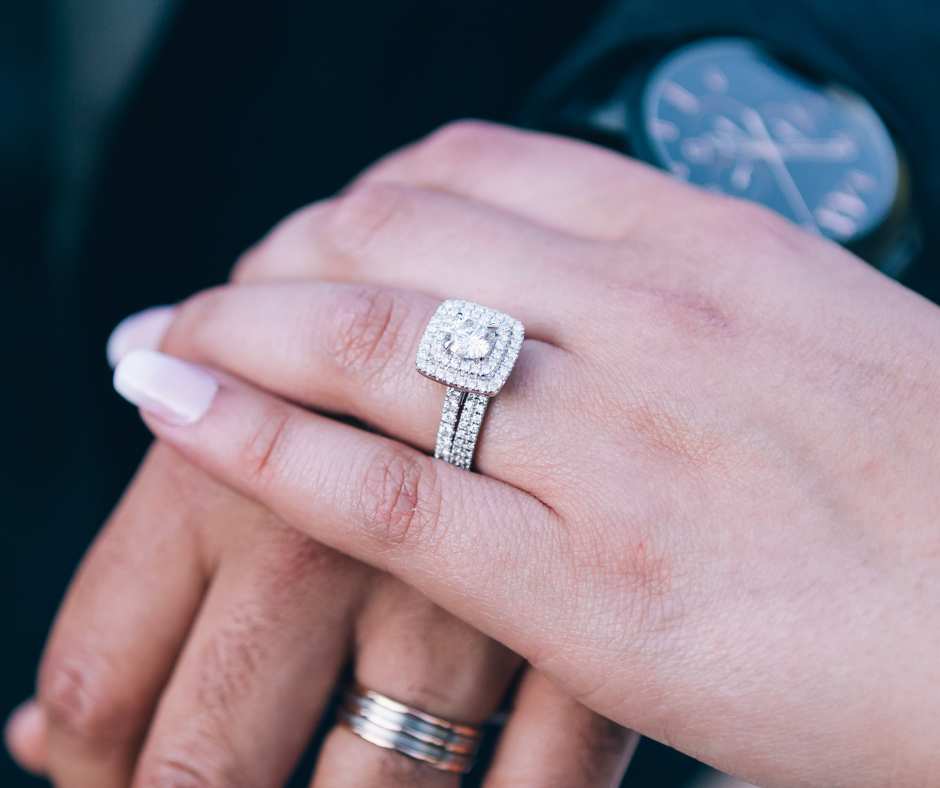
A pre-engagement ring, or a promise ring, is a piece of jewellery that a person gives to their significant other as a token of their commitment. It is similar in style to an engagement ring but is given before an official proposal or engagement occurs. The ring may have various designs, materials, and gemstones and can be worn on any finger.
More instances where a pre-engagement ring is suitable for couples include:
- High school sweethearts: Although most high school graduates may not be ready for marriage, they may want to commit to their significant other for the future.
- Graduates: Upon leaving college, finances may be a concern for graduates who may not have the means to purchase an engagement ring or plan a wedding. A pre-engagement ring serves as a token of commitment as they embark on their careers and save money.
- Couples seeking commitment without marriage: Marriage may not be the desired outcome for every couple. While some may prefer not to marry at all, others may consider it at a later time. However, commitment is still important to these couples, and a pre-engagement ring is a meaningful way to signify a monogamous relationship.
History Of Pre-engagement Rings
Throughout history, the idea of a pre-engagement ring has surfaced in various forms. In the 16th century England, posy rings were engraved with romantic poetry, while acrostic rings spelt a word using gemstones. For instance, "regard" was represented by a ruby, emerald, garnet, amethyst, another ruby, and a diamond.
In the 1970s, the term "promise ring" became widely known and is comparable to a pre-engagement ring.
Popular Styles And Designs Of Pre-Engagement Rings
Now that we understand why couples have pre-engagement rings, and you see you and your partner in the same situation as theirs, chances are you're planning to buy one by the time you're reading this.
While there are no set rules for the design of pre-engagement rings, certain styles and designs are currently trending among couples.
Here are some popular styles and designs of pre-engagement rings:
Solitaire Rings
Like traditional engagement rings, solitaire rings are a classic and timeless choice for pre-engagement rings. They feature a single gemstone, often a diamond, set on a plain band. This design's simplicity allows the gemstone's beauty to shine through.
Halo Rings
Halo rings feature a central gemstone surrounded by a circle of smaller stones, creating a "halo" effect. This style can add extra sparkle and dimension to the ring, making it a popular choice among couples.
Stackable Rings
Stackable rings are a versatile and customisable option for pre-engagement rings. They allow couples to add or remove rings, creating a unique and personalised look. Stackable rings can also be combined with different metals and gemstones for a more eclectic design.
Coloured Stones
While diamonds are popular for pre-engagement rings, many couples opt for coloured gemstones such as sapphires, rubies, or emeralds. These stones can add a pop of colour and personality to the ring.
Vintage-Inspired Rings
Vintage-inspired rings are a romantic and nostalgic option for pre-engagement rings. They feature designs from past eras, such as art deco or Victorian styles, and often incorporate intricate details and unique shapes.
Minimalist Rings
Minimalist rings are a modern and understated option for pre-engagement rings. They feature simple designs and clean lines, often with a single gemstone or plain band. This style is perfect for couples who prefer a more subtle and understated look.
Conclusion
In a world where tradition constantly evolves, pre-engagement rings have become popular for couples looking to express their commitment to each other. These rings offer a unique and personalised way for couples to symbolise their love and dedication before leaping to a formal engagement.
So why not break tradition and explore the world of pre-engagement rings? With so many styles and designs, you will surely find a ring that perfectly captures your love and commitment to one another.
After all, the most important thing is that the ring you choose represents your unique and special bond and serves as a daily reminder of the love and commitment you share!
FAQs
How is a pre-engagement ring different from an engagement ring?
Pre-engagement and promise rings are similar since both serve as temporary placeholders for the eventual engagement ring. Whether a couple calls it a promise or a pre-engagement ring is entirely up to them. If marriage isn't imminent, it may be more fitting to call it a promise ring.
The only subtle distinction between the two types of rings is the finger they're worn on.
Do I need to get a pre-engagement ring before proposing?
No, getting a pre-engagement ring is not a requirement before proposing to your partner. It's a personal choice and depends on the couple's preferences.
Is it okay for men to wear pre-engagement rings?
Yes, pre-engagement rings are not gender-specific, and both men and women can wear them as a symbol of commitment.
The engagement ring has been the traditional symbol of a couple’s commitment…
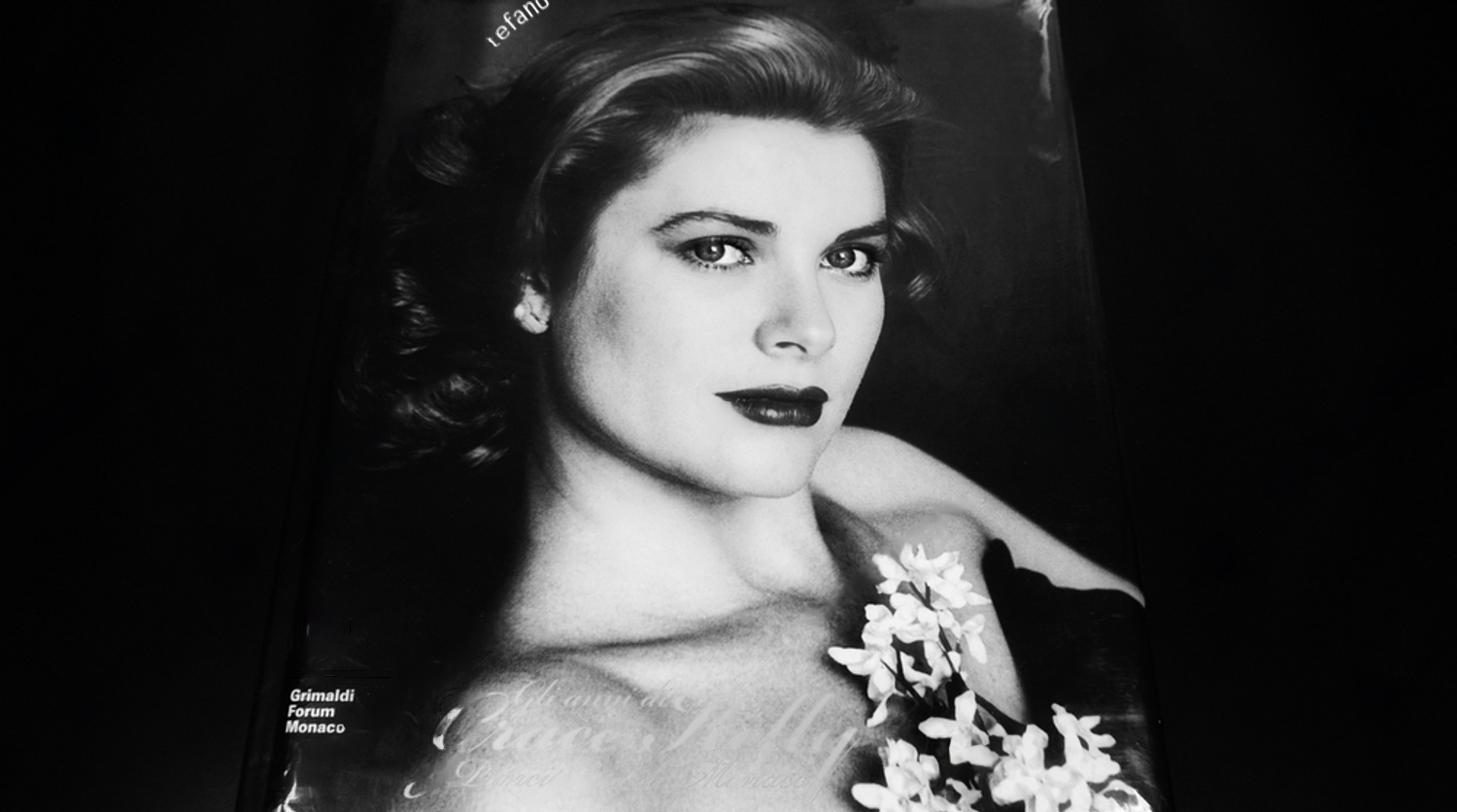
Princess Grace Kelly was a timeless icon known for her elegance and grace. Her legendary style and impeccable taste in fashion were celebrated worldwide.
However, one piece of jewellery that particularly stands out is her stunning engagement ring. The ring has become an iconic symbol of love, elegance, and royalty. It is a piece of jewellery that has captured many's hearts and continues to inspire generations.
In this article, we delve into the fascinating story behind Princess Grace's iconic engagement ring and explore the details that make it a unique and memorable piece of jewellery. From its history to its design, we will uncover the secrets behind this legendary ring and how it came to be.
Little-Known Facts About Princess Grace
Grace Kelly, the beloved actress turned princess, is remembered for her timeless beauty and impeccable style. While much is known about her life and legacy, some little-known facts about Princess Grace of Monaco are worth exploring. Here are some of the most interesting ones:
- She was a skilled equestrian: Grace was an accomplished equestrian before her acting career took off. She won several awards for her horseback riding skills and even participated in horse shows.
- She was fluent in several languages: Grace was fluent in French, which helped her immensely when she married Prince Rainier III of Monaco.
- She was an Oscar-winning actress: Grace Kelly won an Academy Award for Best Actress for her role in the 1954 film "The Country Girl". She was also nominated for two other Academy Awards for her performances in "Mogambo" and "The Swan".
- She had a famous fashion sense: Grace Kelly's fashion sense was legendary, and she has still considered a fashion icon today. Her style was characterised by elegance, simplicity, and timelessness.
- After marrying Prince Rainier, Grace Kelly was prohibited from pursuing her acting career.
- She was a philanthropist: Princess Grace was involved in several philanthropic causes, including the Princess Grace Foundation, which provides scholarships and grants to artists and performers.
- She was a mother of three: Princess Grace and Prince Rainier III had three children together - Princess Caroline, Prince Albert, and Princess Stéphanie.
- She had a tragic end: Sadly, Princess Grace's life was cut short when she died in a car accident in 1982. She was only 52 years old at the time.
The Story Behind Princess Grace's Engagement Ring
The iconic engagement ring of Princess Grace Kelly became one of the most famous and recognisable pieces of jewellery in history. The ring was given to her by Prince Rainier III of Monaco when he proposed to her in 1955.
The engagement ring is a beautiful 10.47-carat emerald-cut diamond set in platinum, flanked by two baguette-cut diamonds. Its classic and timeless design has made it a popular inspiration for engagement rings for decades.
The story behind the ring is a romantic one.
Prince Rainier III had been looking for the perfect engagement ring for Princess Grace for months when he finally found the right one. He consulted with Cartier and chose the emerald-cut diamond from their collection. The diamond was originally part of a tiara designed for a noble family in France in the 1920s. The diamond was reset into a bracelet before being used in the engagement ring.
The engagement ring was presented to Princess Grace by Prince Rainier III during a private dinner at the Prince's Palace in Monaco. The ring's stunning design and the romantic gesture of Prince Rainier's proposal made it an instant sensation. The ring was photographed and reported in newspapers worldwide, catapulting it to iconic status.
The engagement ring's legacy did not end there. It was said that Princess Grace wore the ring in many of her movies and public appearances, solidifying its place as a symbol of love, elegance, and royalty. After she died in 1982, the ring was inherited by her daughter, Princess Caroline of Monaco, who later passed it down to her daughter, Charlotte Casiraghi.
The Princess Grace engagement ring continues to inspire brides-to-be and jewellery designers worldwide. Its timeless design and romantic history make it a classic that will never go out of style.
Conclusion
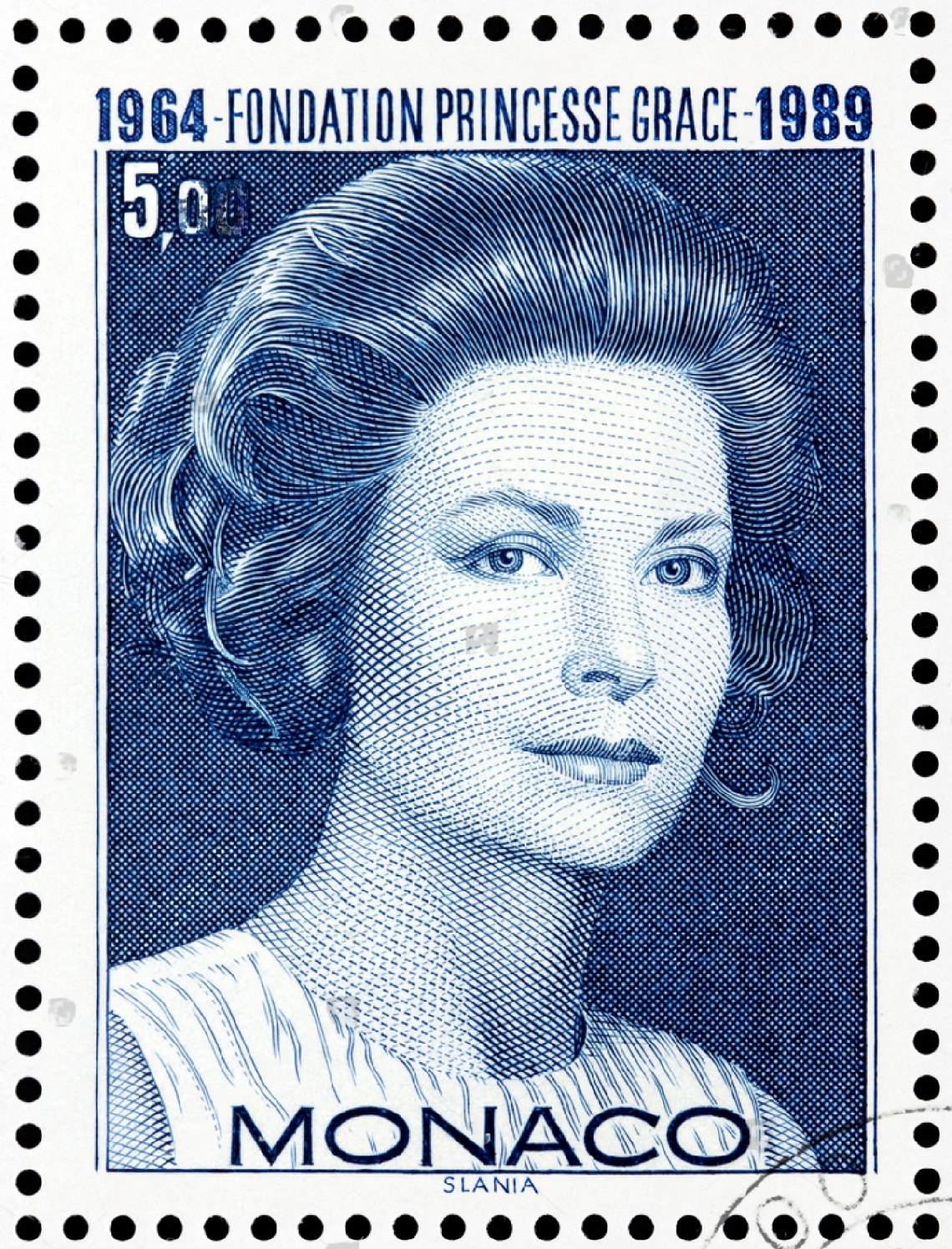
In conclusion, the story behind Princess Grace's engagement ring is a tale of romance, elegance, and timeless beauty.
The ring's history and design reflect the love between Princess Grace and Prince Rainier III and the craftsmanship and artistry of the Cartier jewellers. The ring has captured people's hearts worldwide, and it continues to be a source of inspiration for jewellery designers and brides-to-be.
Princess Grace Kelly left a lasting legacy as a beloved actress, a philanthropist, and a fashion icon. Her engagement ring is a tangible reminder of her remarkable life and enduring influence.
The Princess Grace engagement ring is more than just a piece of jewellery; it is a testament to the power of love and the beauty of lasting traditions. Its legacy will continue to inspire generations to come, and it will forever remain an iconic symbol of Princess Grace Kelly's grace, elegance, and enduring spirit.
FAQs
What other famous pieces of jewellery did Princess Grace own?
Princess Grace Kelly owned several famous jewellery pieces, including a Cartier diamond necklace, a Van Cleef & Arpels bracelet, and a diamond tiara she wore on her wedding day.
Where is Princess Grace's engagement ring now?
Princess Grace's engagement ring is now owned by her daughter, Princess Caroline of Monaco, who inherited it after her mother's death in 1982. Princess Caroline has since passed the diamond ring down to her daughter, Charlotte Casiraghi, who is now the ring's current owner.
Has anyone else worn or been proposed to with the same ring design as Princess Grace's engagement ring?
While many jewellery designers have created engagement ring designs inspired by Princess Grace's ring, it is unknown if anyone else has worn or been proposed to with a replica of her ring design.
However, several celebrities, including Jennifer Aniston and Amal Clooney, have been spotted wearing emerald-cut diamond engagement ring similar to Princess Grace's iconic ones.
Princess Grace Kelly was a timeless icon known for her elegance and…
When it comes to diamond jewellery, choosing the right metal for your setting is just as important as selecting the perfect stone.
Two of the most popular choices for diamond settings are white gold and yellow gold, each with unique qualities that can enhance the beauty of your diamond in different ways. While some people may strongly prefer one metal over the other, others may be unsure which one will best showcase their diamond's sparkle.
Read on to learn the differences between white and yellow gold and help you determine which metal will bring out the best in your diamond. Whether you're looking for an engagement ring, a necklace, or earrings, discover the best metal for your diamond's sparkle.
White Gold
White gold is popular in diamond settings, particularly for a diamond ring. It is a versatile and durable metal that can complement the brilliance of a diamond. While white gold is often compared to platinum, it is a different material with unique properties.
What Is White Gold?
White gold is an alloy made from pure gold and other white metals, such as nickel, palladium, or silver. The addition of these metals gives white gold it's signature silvery-white colour, which is often compared to platinum. The amount of pure gold in a white metal can vary, with 14k and 18k being the most common purities.
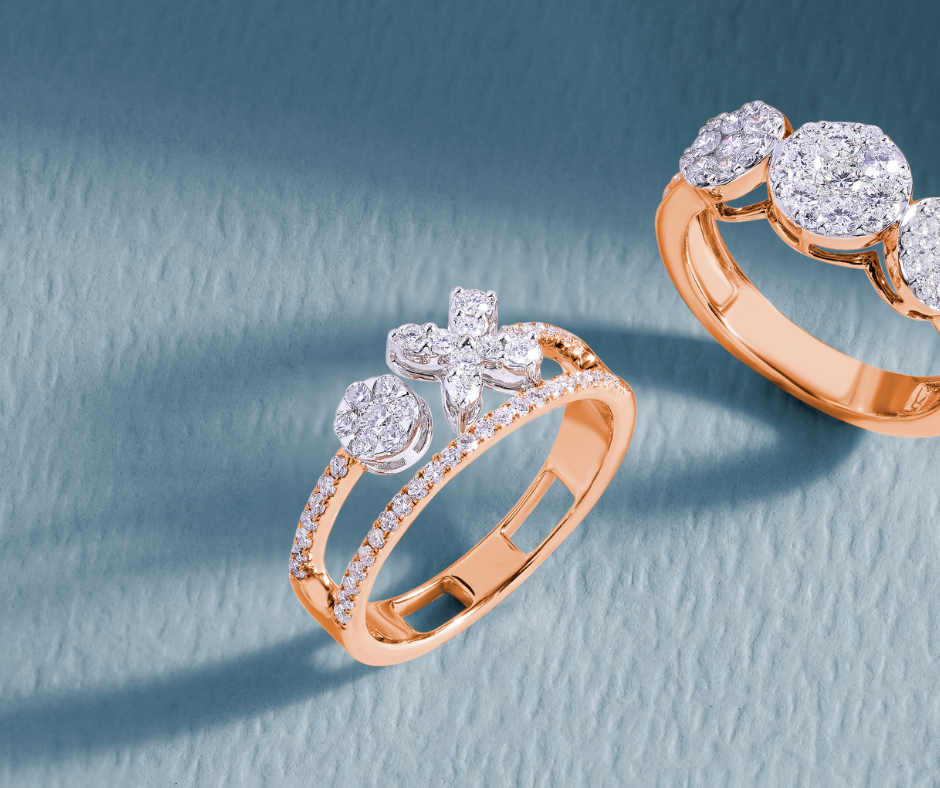
White Gold For Diamond Settings: Pros And Cons
Pros:
- Versatile: White metal complements all types of diamonds and gemstones, making it a popular choice for engagement rings, wedding bands, and other fine jewellery.
- Affordable: White gold is less expensive than platinum, making it a great alternative for those looking for a high-end look without the high-end price tag.
- Durable: White gold is strong and resistant to scratches and tarnishes, making it a great option for everyday wear.
- Easy to maintain: Unlike metals that require frequent polishing, white gold only requires occasional cleaning to maintain its shine.
Cons:
- Can cause skin irritation: Some people may be allergic to nickel, commonly used in white gold alloys. You may opt for a different metal if you have sensitive skin.
- May require rhodium plating: Over time, the natural colour of white gold may fade, revealing the yellowish tint of the underlying gold. To maintain its white colour, white gold may require periodic rhodium plating.
- Can reflect colour: Because white gold is reflective, it can reflect colours from nearby objects, which may affect the appearance of the diamond.
How White Gold Affects The Appearance Of Diamonds
White gold can enhance the appearance of diamonds in several ways. Its silvery-white colour can make diamonds look brighter and more brilliant.
Additionally, white gold can contrast the diamond and the metal, drawing attention to the stone and making it stand out.
However, the reflective nature of white gold can also reflect the colour of nearby objects, which can affect the appearance of the diamond.
Yellow Gold
Yellow gold is a classic and timeless metal used in jewellery for centuries. It is made by mixing pure gold with other metals, such as copper and zinc, to create a warm and golden colour.
What Is Yellow Gold?
Yellow gold is an alloy made from pure gold and other metals, such as copper and zinc. The amount of pure gold in yellow gold can vary, with 14k and 18k being the most common purities. Yellow gold is often used in traditional jewellery designs, particularly for a diamond engagement ring.
Yellow Gold For Diamond Settings: Pros And Cons
Pros:
- Classic and timeless: Yellow gold has been used in jewellery for centuries and has a classic, warm appearance that complements diamonds beautifully.
- Hypoallergenic: Yellow gold is often hypoallergenic, making it a great option for sensitive skin users.
- Durable: Yellow gold is strong and resistant to scratches and tarnishes, making it a great option for everyday wear.
- Easy to maintain: Yellow gold is low-maintenance and requires occasional cleaning to maintain its shine.
Cons:
- May not complement all skin tones: The warm colour of yellow gold may not complement all skin tones, particularly those with cool undertones.
- Not as versatile: While yellow gold is a classic metal, it may not be as versatile as white gold or platinum, particularly for more modern or contemporary designs.
- Can be softer: Adding other metals to pure gold can make yellow gold softer and more prone to scratches and dings.
How Yellow Gold Affects The Appearance Of Diamonds
Yellow gold can enhance the appearance of diamonds in several ways. Its warm colour can create a beautiful contrast between the diamond and the metal, highlighting the stone and drawing attention to its sparkle.
Additionally, yellow gold can complement the warmth of some diamonds, particularly those with a yellow or brown tint. However, the warm colour of yellow gold may not complement all diamonds, particularly those with cooler tones.
Conclusion: Do Diamonds Look Better In White Or Yellow Gold?

In conclusion, the choice between white and yellow gold for diamond settings ultimately comes down to personal preference and the characteristics of the diamond itself. White gold can create a sleek and modern look, while yellow gold has a classic and timeless appeal.
White gold can enhance the brilliance and whiteness of some diamonds, while yellow gold can complement the warmth of others. It is important to consider the pros and cons of each metal and how it may affect the appearance of your diamond when making your choice.
Ultimately, whichever metal you choose, the most important thing is to select a diamond that sparkles and shines beautifully, no matter the setting.
FAQs
Which metal is better for diamond settings: white or yellow gold?
There is no one-size-fits-all answer to this question. The choice between white and yellow gold for diamond settings ultimately comes down to personal preference and the characteristics of the diamond itself.
Is one metal more durable than the other for diamond settings?
It is a common misconception that yellow gold is more durable than white gold for diamond settings. White gold is typically considered more durable due to its alloy composition. White gold is often mixed with nickel, palladium, or silver, making it stronger and more scratch-resistant than yellow gold.
However, it is important to note that both white and yellow gold can be durable metals for diamond settings when properly cared for. Regular cleaning and maintenance can ensure the longevity and durability of your jewellery, regardless of the metal used.
Can the colour of the metal affect the value of the diamond?
No, the colour of the metal used in a diamond setting does not affect the value of the diamond. The value of a diamond is based on its cut, clarity, carat weight, and colour.
When it comes to diamond jewellery, choosing the right metal for your…
If you love to stay ahead of the curve, you'll be excited to learn about the latest trend in jewellery shopping - buying with cryptocurrency.
Not only does it offer a level of convenience and security that traditional payment methods can't match, but it's also becoming increasingly popular among jewellery enthusiasts.
Join us today and discover the convenience and elegance of buying jewellery with crypto at Astteria.
The Benefits Of Buying Jewellery With Crypto

In recent years, cryptocurrency has taken the world by storm. It is a digital currency that allows people to make transactions without the need for banks or financial institutions.
However, it has not just revolutionised how we handle money but also changed how we purchase luxury items like jewellery. Here are some of the benefits of buying jewellery with crypto.
Safety And Security
When you use crypto to buy jewellery, you don't have to worry about the security of your personal and financial information.
Unlike credit cards or other payment methods, which require you to give out sensitive information that could be hacked, cryptocurrencies are decentralised and secured using blockchain technology. Blockchain technology makes it virtually impossible for hackers to access your information, making it a safer and more secure payment option.
Faster Transaction Speeds
Another advantage of using crypto for jewellery purchases is the speed of the transactions. With traditional payment methods, transactions can take several days to be processed. However, with crypto, transactions are completed within minutes. This means you can purchase jewellery and receive it quickly, making it ideal for last-minute gifts or purchases.
Anonymity
When you purchase jewellery with crypto, you can remain anonymous. Cryptocurrency transactions are anonymous, unlike credit card payments, which are tied to your personal information. This means you can buy jewellery without worrying about anyone knowing.
Lower Fees
When you use crypto to buy jewellery, you will likely pay lower transaction fees than you would with traditional payment methods. This is because cryptocurrencies are decentralised, and no intermediaries are involved. This means you can save money on transaction fees, which can be quite high with traditional payment methods.
Wide Selection Of Jewellery
Finally, when you buy jewellery with crypto, you can access a wide selection of jewellery. Many jewellery retailers now accept crypto as a payment method, meaning you can buy anything from a simple necklace to a luxurious diamond ring. This opens up a world of possibilities for those who want to buy jewellery with crypto.
According to a survey by BitPay, a leading cryptocurrency payment processor, the use of crypto to purchase luxury items like jewellery has increased in the last year. This proves that people increasingly see the benefits of using crypto to buy jewellery.
What Type Of Jewellery You Can Buy With Crypto
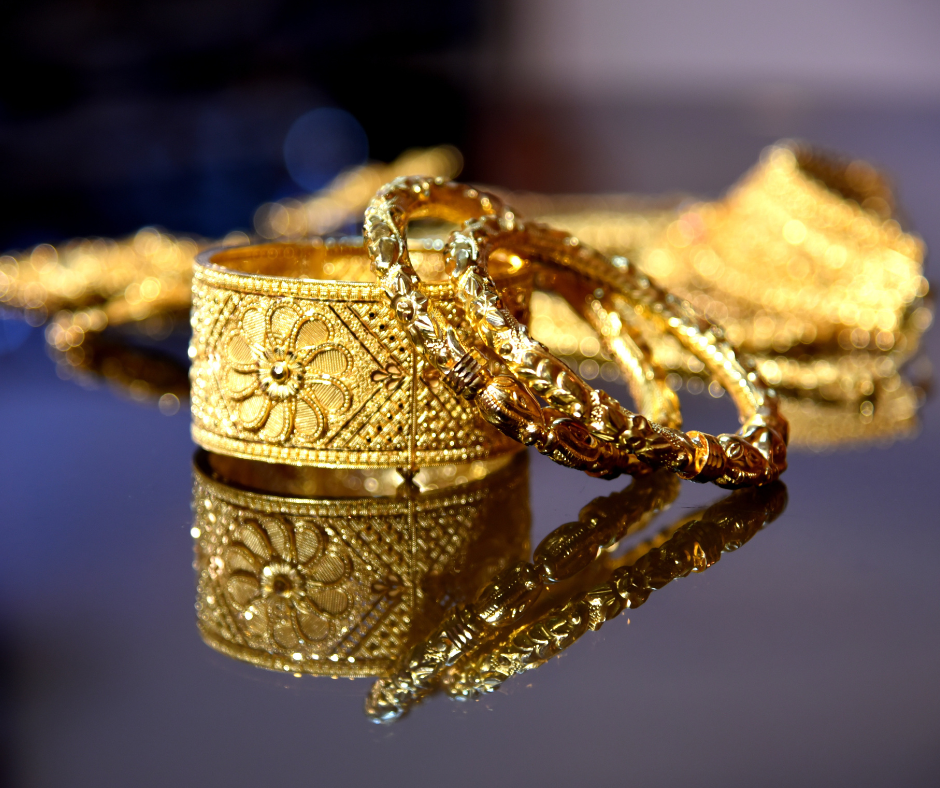
If you're interested in buying jewellery with cryptocurrency, you may wonder what types of jewellery are available. The good news is that with the increasing adoption of cryptocurrency by luxury retailers, a wide variety of jewellery is available for purchase using cryptocurrency.
Here are some types of jewellery you can buy with crypto.
Rings
One of the most popular types of jewellery that you can buy with crypto is rings. You can find a wide range of rings, from simple bands to diamond engagement rings, available for purchase using cryptocurrency.
Necklaces
Necklaces are another type of jewellery that you can buy with crypto. Whether you're looking for a simple chain or a statement pendant, you can find a wide selection of necklaces using cryptocurrency.
Earrings
Earrings are a classic jewellery item that can add a touch of elegance to any outfit. From simple studs to elaborate chandelier earrings, you can find a wide selection available for purchase using cryptocurrency.
Bracelets
Bracelets are another type of jewellery that you can buy with crypto. Whether you're looking for a delicate bangle or a statement cuff, various bracelets are available for purchase using cryptocurrency.
Watches
Luxury watches are a popular item among those interested in buying cryptocurrency jewellery. Whether you're looking for a classic timepiece or a modern smartwatch, you can find many watches available for purchase using cryptocurrency.
Fine Jewellery
For those looking for the ultimate luxury jewellery experience, a wide selection of fine jewellery is available using cryptocurrency. From high-end diamond necklaces to rare gemstones, there is something for every taste and budget.
How To Start Buying Jewellery With Crypto
It can initially seem overwhelming if you're new to cryptocurrency and want to start buying jewellery with crypto. However, it's easier than you might think, and with the following steps, you can start buying jewellery with crypto in no time.
Choose A Cryptocurrency Exchange
The first step to buying jewellery with cryptocurrency is to choose a cryptocurrency exchange. This is where you can buy and sell cryptocurrency using traditional currency. There are many different exchanges, so research to find one that suits your needs.
Purchase Cryptocurrency
Once you choose a cryptocurrency exchange, you must purchase cryptocurrency. This can be done using a bank transfer, credit card, or debit card. Choose the amount of cryptocurrency that you want to purchase, and then make the transaction.
Choose A Jewellery Retailer
After you have purchased cryptocurrency, you need to find a jewellery retailer that accepts cryptocurrency as a payment method, like Astteria.
They accept a wide range of cryptocurrencies, including Bitcoin, Ethereum, Litecoin, and Bitcoin Cash, making it easy for buyers to transact in their chosen cryptocurrency.
Browse more about what type of jewellery you can buy with Astteria HERE.
Make Your Purchase
Once you have found a jewellery retailer that accepts cryptocurrency, you can make your purchase. Select the item you want to buy, then choose cryptocurrency as your payment method. The retailer will provide you with the necessary information to make the transaction.
Securely Store Your Cryptocurrency
After you make your purchase, storing your cryptocurrency securely is important. You can either store it in an online wallet or a hardware wallet. Be sure to take the necessary security measures to protect your cryptocurrency.
Conclusion
Buying jewellery with cryptocurrency is an exciting and innovative way to purchase high-quality jewellery. With the increasing cryptocurrency adoption by jewellery retailers like Astteria, it's becoming easier than ever to transact with cryptocurrency and own beautiful diamond jewellery.
There are many benefits to buying jewellery with cryptocurrency, including lower transaction fees, increased security, and greater privacy. Plus, plenty of options exist with the wide range of jewellery retailers now accepting cryptocurrency.
So why not leap and explore the world of buying jewellery with cryptocurrency? You might just find your next favourite piece of jewellery and enjoy the added benefits of using this cutting-edge technology.
FAQs
Can I use any cryptocurrency to buy jewellery?
This depends on the jewellery retailer that you choose. Some retailers accept a wide range of cryptocurrencies, while others only accept a few. Before purchasing, check which cryptocurrencies the retailer accepts and whether the cryptocurrency you want to use is included.
Can I return jewellery bought with cryptocurrency?
Yes, most jewellery retailers that accept cryptocurrency offer a return policy, just like any other payment method. However, it's important to read the retailer's return policy carefully before purchasing to ensure you understand the terms and conditions.
What happens if the value of my cryptocurrency changes before my jewellery purchase is complete?
The value of cryptocurrency can be volatile, and its value can fluctuate quickly. If the value of your cryptocurrency changes before your jewellery purchase is complete, the amount of cryptocurrency required to complete the purchase may also change. Some retailers may offer the option to lock in the jewellery price at purchase to prevent this from happening.
If you love to stay ahead of the curve, you’ll be excited…